RANDLAB







GLOBAL EDITION v2








To Pee, or not to Pee

















MESSAGE FROM THE GENERAL MANAGER










GLOBAL EDITION v2




























Howdy, Partners In Practice.
It is with great pride and humility that I address you after an eventful and rewarding first six months as General Manager of Randlab.
Following Animalcare Group’s acquisition of Randlab at the start of January, our team has worked tirelessly to ensure a seamless transition for everyone involved. Our highest priority has been to maintain—and wherever possible, enhance—the level of service you have come to expect from Randlab.
Over recent months, I have had the privilege of meeting with customers across Australia, New Zealand, and the United Arab Emirates. I am grateful for your candid feedback, which has been invaluable in shaping our plans. As a direct result, we have invested in expanding our team and have accelerated our efforts to register new products in New Zealand, the UAE, and soon across the wider Gulf Cooperation Countries.
Animalcare Group continues to demonstrate a strong commitment to supporting Randlab’s growth and innovation. We are actively developing meaningful new products to serve all our key markets, and we look forward to sharing these with you as soon as possible.
I would also like to take this opportunity to thank you for the heartfelt messages sent to Randlab’s founder, Angelo Vasili, in recognition of his extraordinary contributions to, not only Randlab, but the entire equine veterinary community over the past 20 years. Angelo remains involved in a consulting capacity, offering his remarkable expertise and knowledge as we continue to expand our comprehensive range of prescription medicines.
Randlab's commitment to supporting equine veterinarians is unwavering. We remain dedicated to your continuing education and are proud to support events wherever equine vets gather for CPD or recreation.
The entire Randlab team is focused on your success - today, tomorrow, and for an even brighter future together.
Please do not hesitate to reach out if there is anything we can do to support you.
With my sincere thanks and warmest regards,

BRUCE BELL General Manager
Randlab is the largest supporter of equine veterinary eduction in Australasia and a major sponsor globally.
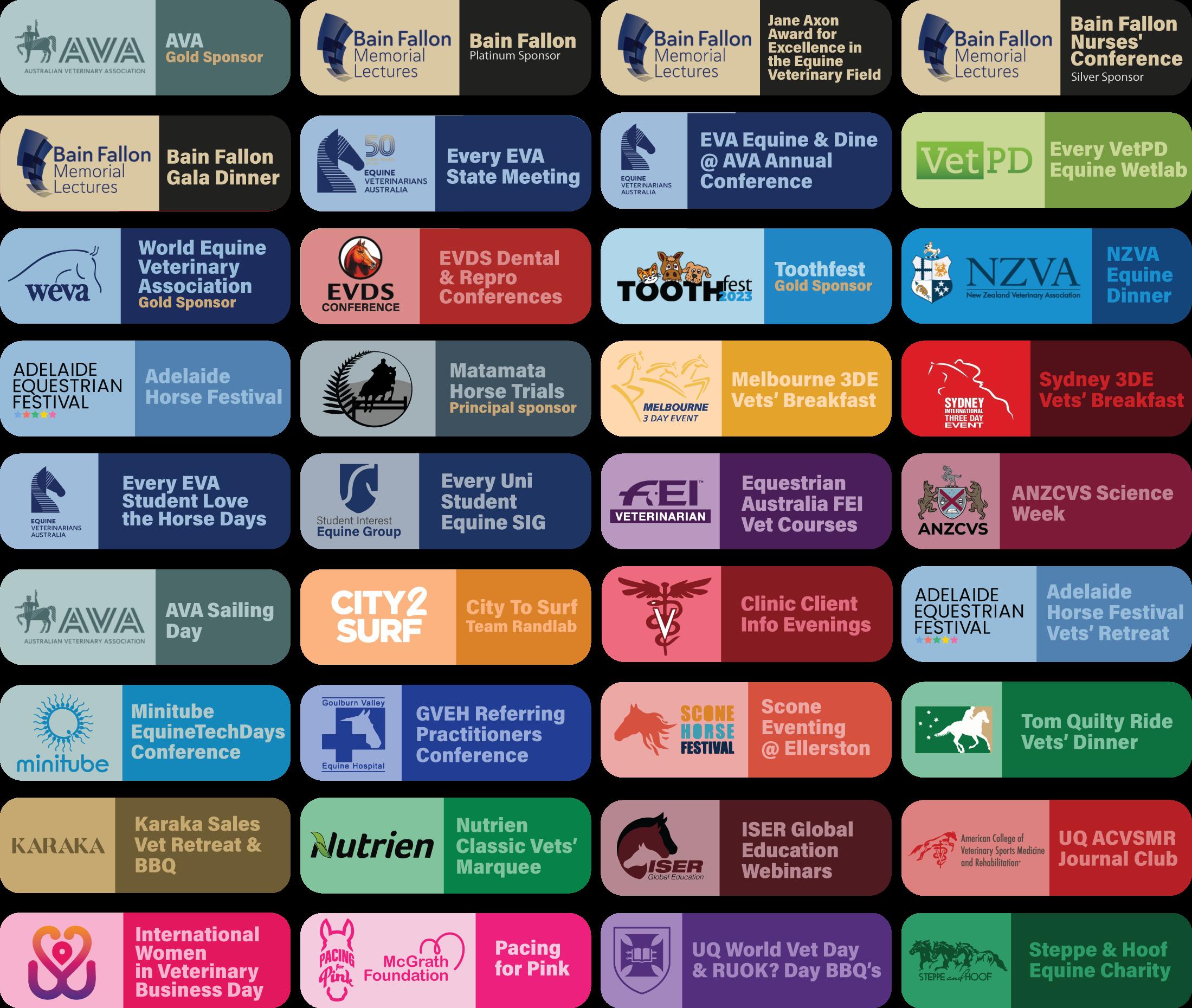

Randlab offers equine veterinary practices free access to a 3m gastroscope and a trained and certified gastroscopy technician to conduct a Gastroscopy Clinic Day at your clinic. No experience required. Our trained gastroscopy technicians will take you through the whole process. Over 30,000 gastroscopies already performed. A great practice builder! Contact your local Randlab representative (see page 66) to organise your next Gastroscopy Clinic Day.
The information contained in this catalogue is believed to be correct at the time of publication. However, veterinarians should rely on their own research prior to prescribing or administering any of the products.








HIGH PERFORMANCE PRODUCT FOR HIGH PERFORMANCE HORSES
* One box of Gastropell Forte is enough to treat one 500kg horse for 15 days.
For accurate diagnosis of gastric ulcers and to differentiate ESGD from EGGD, direct endoscopic examination of the gastric mucosa (gastroscopy) is recommended. Contact your local Randlab representative (p.66), if you would like to book a Gastroscopy Day for your clinic.
Gastropell Forte has been shown to be effective in high performance horses (specific APVMA/ACVM registration). It is also the product of choice in chronic, recurrent or severe gastric ulcers or whenever rapid resolution of gastric ulceration is required.
Clinical signs of gastric ulceration include:
• Poor body condition
• Poor performance
• Depressed appetite
• Reluctance to train
• Poor hair coat
• Girth pain
• Skin sensitivity
• Chronic diarrhoea
• Behavioural changes
• Recurrent low grade colic
• Intermittent loose faeces
• Crib biting / windsucking
Gastropell Forte has been specifically formulated for horses under high "stress" scenarios, typical of most performance horses. It is the omeprazole treatment of choice for racing horses (thoroughbred and standardbred) and endurance horses.
Equine Glandular Gastric Disease [EGGD] is a specific type of gastric disease that affects approximately 40% of racing and sports horses. The disease is characterised by inflammatory lesions, which are most commonly found in the pyloric region of the stomach.
Higher doses of omeprazole, as are available in Gastropell Forte, in conjunction with sucralfate have been shown to be useful in the treatment of EGGD. See Horse Hack below for treatment options. It is likely that horses training and competing under high stress scenarios, such as racehorses in training, endurance horses, etc will require ongoing treatment with Gastropell Forte at the full treatment dose whilst they remain in work.
The treatment of Equine Glandular Gastric Disease remains problematic. Current recommendations include the use of high dose omeprazole combined with sucralfate (20mg/kg bid-qid) for a minimum of 8 weeks treatment. Other medications such as misoprostol (5μg/kg PO bid) have also been recommended. Husbandry changes are also an essential part of EGGD management. Horses should undergo a follow up gastroscopy at the end of the prescribed treatment period.
Always administer Gastropell Forte on a relatively empty stomach (eg first thing in the morning). Wait 30-60min prior to feeding.
Always administer at the back of the mouth over the base of the tongue to prevent chewing on the enteric-coated microspheres.
Treatment Dose (ESGD): 2.0 mg/kg BW (10ml/500 Kg BW) once daily for 2 to 4 weeks followed by daily maintenance dosing.
Treatment Dose (EGGD): 2.0 mg/kg BW (10ml/500 Kg BW) once daily for 6 to 8+ weeks.
Prevention/Maintenance Dose: 5 mL/500 kg BW (1.0 mg/kg BW) once daily whilst horse remains in training.
APVMA No. 82722 | ACVM No. A010775 (NZ)
INCREASED ABSORPTION COMPARED TO COMPETITORS IN 4 UNIVERSITY TRIALS MEANS BETTER BIOAVAILABILITY.


6 x 33g Pack* multi-dose syringes
*One box of Ulcershield is enough to treat one 600kg horse for 30 days.
For accurate diagnosis of gastric ulcers and to differentiate ESGD from EGGD, direct endoscopic examination of the gastric mucosa (gastroscopy) is recommended. Contact your local Randlab representative (p66), if you would like to book a Gastroscopy Day for your clinic.
INDICATIONS
For the treatment and prevention of gastric ulcers in the horse.
Clinical signs of gastric ulceration include:
• Poor body condition
• Poor performance
• Depressed appetite
• Reluctance to train
• Poor hair coat
• Girth pain
• Skin sensitivity
• Chronic diarrhoea
• Behavioural changes
• Recurrent low grade colic
• Intermittent loose faeces
• Crib biting / windsucking
Equine Glandular Gastric Disease [EGGD] is a specific type of gastric disease that affects approximately 40% of racing and sports horses. The disease is characterised by inflammatory lesions, which are most commonly found in the pyloric region of the stomach.
The treatment of EGGD is problematic. Current recommendations include the use of enhanced gastric acid suppression due to the more acidic nature of the gastric fluid found in the pyloric region of the stomach. This is commonly used in combination with a gastroprotectant such as sucralfate. Longer term treatment (> 8 weeks) with the combination is generally required for EGGD.

THE GOLD STANDARD IN ULCER
50 x 33g Pack multi-dose syringes
DOSAGE
Always administer Ulcershield on a relatively empty stomach (eg first thing in the morning). Wait 30-60min prior to feeding.
Treatment Dose: 4 mg/kg. Adult horses (up to 600 kg) give 6mL daily for 28 days.
Prevention/Maintenance Dose: 2 mg/kg*.
Adult horses (up to 600kg) give 3.0mL daily for 28 days.
*The maintenance dose may be insufficient to prevent the recurrence of ulceration in horses subjected to increased stress such as intense training, heavy competition schedule, transport, etc. In such cases, ongoing treatment with the full treatment dose may be necessary.
APVMA No. 81799 | ACVM No. A010916 (NZ)
Dr Shaan Mocke (Vet Align)
As a mobile vet, I use AI between consults to write my notes. I either dictate whilst I am driving or pull over in a safe place and use voice to text. My favourite is ChatGPT as I have trained it to write consults in a certain format. This way I don't forget information or leave out any items for invoicing as its still fresh in my mind.
Dr James Fruin (SASH) continues the discussion:
Take the time to tailor AI to how you write your notes. You can use ChatGPT to teach you how to program itself. Then you can dictate straight to the program to record all your notes and there will be less time spent correcting them when it writes something you wouldn't normally write.

GASTRICENTRY-LEVEL ALSOTREATMENT.ULCER FOR LOW BODYDOSINGWEIGHT
5 x 30g Pack* multi-dose syringes
* One box of Gastropell Daily is enough to treat one 500kg horse for 15 days.
For accurate diagnosis of gastric ulcers and to differentiate ESGD from EGGD, direct endoscopic examination of the gastric mucosa (gastroscopy) is recommended. Contact your local Randlab representative (p66), if you would like to book a Gastroscopy Day for your clinic.
INDICATIONS
Gastropell Daily is the product of choice for the treatment and prevention of low grade gastric ulceration. Ideal for use in horses in light work or under low stress scenarios and for dosing low body weight horses such as foals and ponies.
Clinical signs of gastric disease include:
• Poor body condition
• Poor performance
• Depressed appetite
• Reluctance to train
Signs in foals include:
• Depressed appetite
• Dribbling saliva
• Sternal recumbency
• Poor hair coat
• Girth pain
• Skin sensitivity
• Chronic diarrhoea
• Inappetence
• Colic
• Dog sitting

• Behavioural changes
• Recurrent low grade colic
• Intermittent loose faeces
• Crib biting / windsucking
• Teeth grinding
• Diarrhoea
• Weakness
50 x 30g Pack multi-dose syringes
DOSAGE
Always administer Gastropell Daily on a relatively empty stomach (eg first thing in the morning). Wait 30-60min prior to feeding.
Always administer at the back of the mouth over the base of the tongue to prevent chewing on the enteric-coated microspheres.
Adult Horses: Treatment Dose; 1.0 mg/kg BW (10ml/500 Kg BW) once daily for 2 to 4 weeks followed by daily maintenance dosing.
Maintenance Dose; 0.5 mg/kg BW (5ml/500 Kg BW) once daily while horse remains in training, or as directed by a veterinarian. The maintenance dose may be insufficient to prevent the recurrence of ulceration in horses subjected to increased stress, such as intense training.
Foals: 1.0 mg/kg BW (2mL/100Kg BW) once daily.
APVMA No. 62558 | ACVM No. A010165 (NZ)
Dr Paula Williams (WestVets)
When doing a BAL, Paula likes to instil 20-30mL of lignocaine into the trachea before introducing the BAL tube into the bronchi. Reduces the amount of coughing, especially in horses with inflamed or irritated airways. As an added bonus BAL tip: Paula nebulises the horse with salbutamol prior to doing the BAL to increase the fluid yield, especially in more chronic cases.

10g scoop size included in jar

PUBLISHED INDICATIONS
• Locally acting gastric and intestinal mucosal protectant.
• Adjunct treatment for gastric ulcers (esp glandular and pyloric ulcers) and other ulcerative disorders of the intestinal tract.
Sucralfate has been used in the treatment of oral, oesophageal, gastric, duodenal and large intestinal ulcers/protein losing enteropathies.
• Sucralfate is particularly indicated as an adjunct therapy in the treatment of Equine Glandular Gastric Disease (EGGD) including glandular and pyloric disease and ulcers.
• Sucralfate has also been used for the treatment and prevention of ulcerative colitis/typhlitis, especially due to administration of prolonged and/or high doses of NSAID’s and especially in foals.
Sucralfate has a wide dose range varying from 4-40mg/kg bid to qid. The most frequently used dose rates are 12mg/kg tid or 20mg/kg bid.
• Foals: In association with omeprazole for preventing gastric ulcers 10-20mg/kg PO q6-8h.
REFERENCES:
1. Equine Gastric Ulcer Syndrome: An Update on Current Knowledge. Vokes J, Lovett A, Sykes B. Animals (Basel). 2023 Apr 5;13(7):126. Review.
2. EGGD Consensus Statement. Recommendations for the management of Equine Glandular Gastric Disease. Rendle D, Brazil T, Hallowell G, Hewetson M, Bowen M, Conwell R, Hepburn R, Sykes B. UK-Vet Equine. Jan/Feb 2018.
3. Antiulcer therapy. Papich MG. Vet Clin North Am Small Anim Pract. 1993 May;23(3):497-512. Review.
4. Effect of omeprazole and sucralfate on gastrointestinal injury in a fasting/NSAID model. Bishop RC, Kemper AM, Wilkins PA, McCoy AM. Equine Vet J. 2021 Oct 31. doi: 10.1111/evj.13534. Online ahead of print.
5. Misoprostol is superior to combined omeprazole-sucralfate for the treatment of equine gastric glandular disease. Varley G, Bowen IM, Habershon-Butcher JL, Nicholls V, Hallowell GD. Equine Vet J. 2019 Sep;51(5):575-580. doi: 10.1111/evj.13087. Epub 2019 Mar 21.
6. The protective effects of sucralfate and ranitidine in foals experimentally intoxicated with phenylbutazone. Geor RJ, Petrie L, Papich MG, Rousseaux C. Can J Vet Res. 1989 Apr;53(2):231-8.
7. Right dorsal colitis in the horse: minireview and reports on three cases in Ireland. Galvin N, Dillon H, McGovern F. Ir Vet J. 2004 Aug 1;57(8):467-73. doi: 10.1186/20460481-57-8-467.
8. Does lesion type or severity predict outcome of therapy for horses with equine glandular gastric disease? - A retrospective study. Pratt SL, Bowen M, Hallowell GH, Shipman E, Bailey J, Redpath A. Vet Med Sci. 2023 Jan;9(1):150-157. doi: 10.1002/ vms3.1034. Epub 2022 Dec 10.
9. Gastroduodenal ulceration in foals. Becht JL, Byars TD. Equine Vet J. 1986 Jul;18(4):307-12.
10. Effect of sucralfate on healing of subclinical gastric ulcers in foals. Borne AT, MacAllister CG. J Am Vet Med Assoc. 1993 May 1;202(9):1465-8.
11. Odds of moderate or severe gastric ulceration in racehorses receiving antiulcer medications. Orsini JA, Haddock M, Stine L, Sullivan EK, Rabuffo TS, Smith G. J Am Vet Med Assoc. 2003 Aug 1;223(3):336-9.
If you are looking for ways of increasing your Practice’s footprint, a Gastroscopy Clinic Day is a no-brainer. Seems every horse owner has a reason to have their horse gastroscoped, even if it is just for peace of mind. You don’t need to know anything about performing a gastroscopy to get started. Randlab provides vet practices with free access to a 3m video gastroscope. Our technicians are highly experienced in guiding veterinarians through the whole procedure. Over 30,000 gastroscopies performed. It is up to the veterinary practice as to what they charge the client.
Many practices like to value-add to their Gastroscopy Clinic Days and take advantage of the horse being sedated by offering a free or discounted dental check (any dental work subsequently identified would be charged at the normal rate), sheath clean or bundle the gastroscopy with a de-worming.
Contact your local Randlab Rep (p66) for more details. Or Austvet Endoscopy to buy a gastroscope.





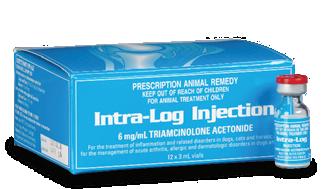



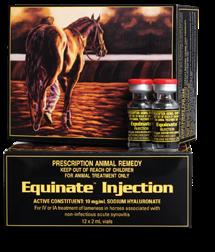

FORREGISTERED I.A.USE IN THE HORSE

12 x 3mL (18mg) Pack vials
INDICATIONS
Intra-Log (Triamcinolone) Injection is a potent synthetic corticosteroid that is registered for intraarticular, intra-synovial, intramuscular and subcutaneous use. Triamcinolone acetonide has 5-10x potency of cortisone. It is considered an intermediate acting corticosteroid with an intermediate onset of action and duration. The latter is variable depending on the condition being treated but ranges from 3-6 weeks.
Triamcinolone is commonly used to treat arthritis, including acute synovitis, osteoarthritis, etc in horses by the intra-articular route.
Intra-Log is also an anti-inflammatory agent, an immunosuppressive agent and a replacement for glucocorticoid activity in patients with adrenal insufficiency.
Intra-Log is indicated in the treatment of the following disease categories:
• Immune-mediated diseases
• Dermatologic disorders
HORSE HACK
• Inflammatory conditions
• Arthritis
• Allergic conditions
• Adrenal insufficiency
Horses administered triamcinolone may go off their feed for 2-5 days following administration.
The administration of Intra-Log Injection to horses may affect the peripheral blood count for a period of up to two weeks. The changes are typical of a stress leucogram (leucocytosis or leucopaenia associated with a relative neutrophilia and or lymphopaenia, increase in ALP, etc). These changes may be observed even when the triamcinolone is administered intra-articularly.
WARNING: The intra-articular injection of triamcinolone will depress the local immune response and mask early signs of septic arthritis. Signs of septic arthritis may first appear up to three weeks following IA injection with triamcinolone.
WARNING: The injection of triamcinolone into a ligament (either intentionally or inadvertently) may result in a prolonged excretion time and lead to a positive doping test in performance horses. Distal hock joints, synovial intervertebral joints and the sacroiliac joints are most at risk.
DOSAGE
Intra-log Injection provides the maximum recommended single administration dose (18mg) in a convenient single use vial.
If using triamcinolone systemically, the aim is to use the minimum amount required for as short a time as possible. Delay any further administration for > 7 days.
Intramuscular or subcutaneous injection: Horses; 12 to 18 mg (2-3 mL).
Dogs and Cats; 0.1 to 0.2 mg/kg bodyweight.
Intra-articular/ intra-synovial injection:
A full sterile surgical prep is always required prior to the IA administration of Intra-Log. Sterile gloves should always be worn for administration. Horses; 6 to 18 mg per joint depending on joint size.
Dogs and Cats; 1 to 3 mg.
APVMA No. 91413
MY FAVOURITE RANDLAB

INDICATIONS
Zycan is the only registered generic to Adequan worldwide. Adequan has been registered in the USA for over 38 years and is the favoured joint medication of US veterinarians. There are over 50 publications supporting the use of Adequan in horses, humans and canines.
Zycan is a Disease Modifying Osteoarthritis Drug (DMOAD) for the treatment and prevention of clinical signs attributable to degenerative and/or traumatic aseptic joint disease in horses. DMOADs are intended to prevent, retard or reverse the morphologic cartilaginous lesions associated with degenerative joint disease (DJD).
PSGAGs, such as Zycan, have been advocated for the (i) prevention and treatment of joint disease (ii) joint maintenance programs and (iii) post-operative care of horses returning to training following joint surgery.
Zycan can be used as a substitute for pentosan (eg Arthropen) and as such, can be used as you would pentosan.
Zycan appears to cause fewer injection site reactions than pentosan.
Zycan is not known to cause discolouration of the hair coat at the injection site.
Zycan is also a good alternative to pentosan in horses that have had previous injection site reactions to pentosan.
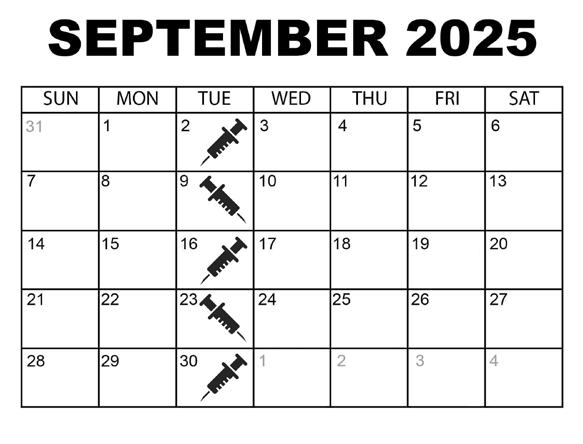
7 x 5mL Pack single dose vials P
To reduce discomfort associated with repeated injections, especially when multiple people are administering the injections, I have a rotation system I use with all my clients. On an even calendar day (eg 4th July), I use the left side of the horse. On an odd calendar day (eg 1st August), I use the right side of the horse. If the horse is receiving bid injections. Rump in the morning. Neck in the afternoon.
Intra-muscular injection: 500mg (5mL) per 500kg horse, repeated every 4th day for 7 injections (i.e. 28 days). Weekly injections have also been shown to be effective.
The series may be repeated as needed upon recurrence of the clinical signs of DJD and associated lameness. Alternatively a repeat course may be recommended at the time of intense training and/or competition. Otherwise, twice yearly courses are recommended.
Regular maintenance injections with Zycan after the initial priming course have also been advocated. These vary from weekly (eg racehorses in training, performance horses with chronic lameness problems) to monthly (sports horses).
APVMA No. 87359
WARNING: Zycan is Not registered for intra-articular use.
Pentosan Polysulfate Sodium 250 mg/mL
50mL multi-dose vial polysulfate sodium 250 mg/mL
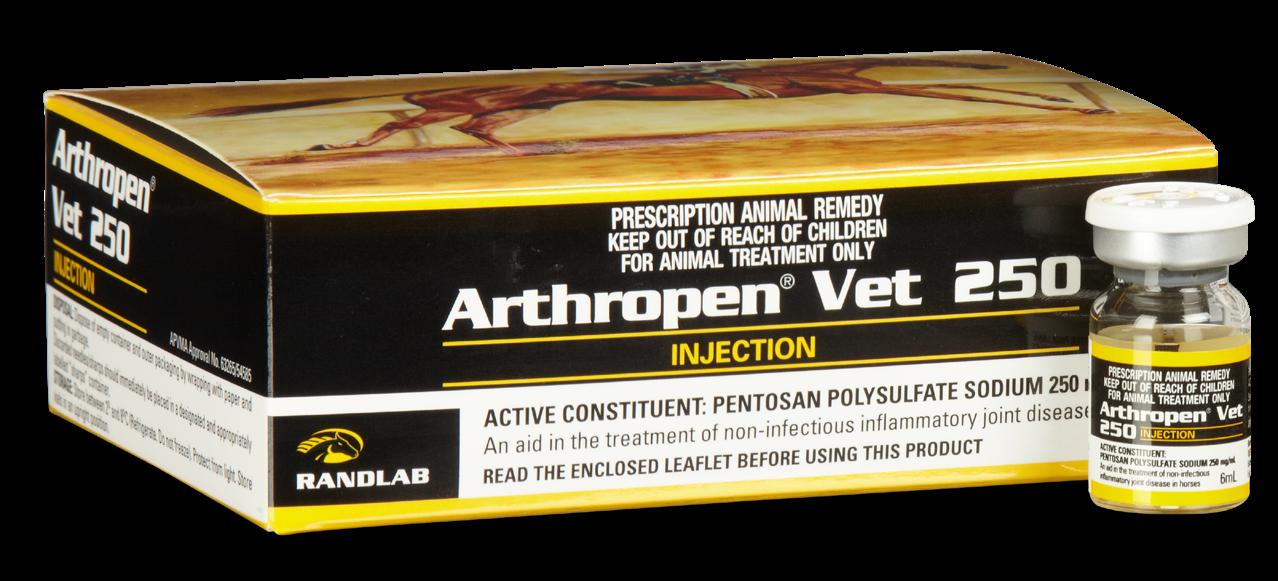

12 x 6mL Pack single dose vials
ANYSULFATIONHIGHESTOF PENTOSAN ON THE MARKET MEANS BIO-ACTIVITYHIGHEST
INDICATIONS
Disease Modifying Osteoarthritis Drug (DMOAD).
Most highly sulfated pentosan on the market. Higher sulfation means increased cell penetration and increased efficacy.
Arthropen Vet 250 Injection is indicated as an aid in the treatment of non-infectious, inflammatory or degenerative joint disease in the horse.
Clinical indications include the following conditions:
• Osteoarthritis (OA)
• Traumatic joint disease
• Multiple or non specific joint disease
• Developmental Orthopaedic Disease (incl OCD)
• Synovitis
• Degenerative joint disease
The high concentration of Pentosan Polysulphate in Arthropen Vet 250 has been specifically designed for low volume administration in the horse.
Arthropen Vet is especially useful in treating conditions affecting multiple joints or where joint pain is suspected but cannot be localised.
Regular routine use of pentosan has been shown to be an effective preventative for the development of osteoarthritis.
The storage conditions for Arthropen have changed. It no longer needs to be refrigerated and can be kept in air conditioning (store below 25oC, do not freeze).
In house testing has also shown the product to be stable at even higher temperatures.
WARNING: The intravenous use of pentosan polysulfate may rarely result in anaphylaxis and death.
Do not use intravenously!
Early treatment is an important step in preventing the products of inflammation from damaging articular cartilage and causing irreversible joint disease.
DOSAGE
An initial course of four injections a week apart is recommended. This is generally followed by a program of either weekly injections or injections spaced at 2-4 week intervals depending on the intensity of the horse’s exercise/competition program and the response to treatment. Horses undergoing heavy training or competition schedules or horses with a chronic lameness problem are likely to benefit from ongoing weekly Arthropen injections.
Dose - 3mg/kg bodyweight (6mL/500kg horse) by intramuscular injection on four occasions with an interval of 5-7 days between injections. Preferable to alternate injection sites from week to week. Best given by deep intramuscular injection. To avoid haemorrhage associated with injection, a small needle (e.g. 21 gauge) is recommended.
Intra-articular: 1.0mL by intra-articular injection. May be repeated at weekly intervals for 3 to 4 treatments. More than one joint may be treated at the one time. Joint flares are common after intraarticular pentosan.
APVMA No. 63265 | ACVM No. A010081 (NZ)

INDICATIONS
An aid in the treatment and prevention of non-infectious inflammatory and degenerative joint disease in horses and dogs.
Low concentration pentosan means less tissue reactive. Highest level of sulfation means increased bio-activity.
Arthropen Vet Injection is a low concentration formulation of pentosan polysulfate (PPS) suitable for use in dogs and horses. It aids in the treatment and prevention of non-infectious inflammatory joint disease in conditions such as:
• Osteoarthritis (OA)
• Traumatic joint disease
• Multiple or non specific joint disease
• Osteochondritis dissecans (OCD)
• Synovitis
• Degenerative joint disease
Arthropen Vet Injection is a Disease Modifying Osteoarthritis Drug (DMOAD). The low concentration of pentosan polysulfate in Arthropen Vet Injection may cause less tissue irritation at the injection site.
Arthropen Vet Injection is especially useful in treating conditions affecting multiple joints or where joint pain is suspected but cannot be localised.
HORSE HACK
Arthropen Vet 100mg/mL may cause fewer injection site reactions than Arthropen Vet 250mg/mL.
Arthropen Vet works even better in dogs than horses.
Early treatment is an important step in preventing the products of inflammation from damaging articular cartilage and causing irreversible joint disease.
WARNING: The intravenous use of pentosan polysulfate may rarely result in anaphylaxis and death. Do not use intravenously!
dose vials
DOSAGE
New aircon storage conditions.
An initial course of four injections a week apart is recommended. This is generally followed by a program of either weekly injections or injections spaced at 2-4 week intervals depending on the intensity of the horse’s exercise/competition program and the response to treatment. Horses undergoing heavy training or competition schedules or horses with a chronic lameness problem are likely to benefit from ongoing weekly Arthropen injections.
Dose: 2-3mg/kg bodyweight by intramuscular injection on four occasions with an interval of 5-7 days between injections. Preferable to alternate injection sites from week to week. Best given by deep intramuscular injection. To avoid haemorrhage associated with injection, a small needle (e.g. 21 gauge) is recommended.
Intra-articular: 2.5mL by intra-articular injection. May be repeated at weekly intervals for 3 to 4 treatments. More than one joint may be treated at the one time. Joint flares are common after intraarticular pentosan.
APVMA No. 60922 | ACVM No. A010024 (NZ)

6 x 6mL Pack single dose vials
INDICATIONS
For IV treatment of non-infectious synovitis and degenerative joint disease. Higher molecular weight formulations of HA such as Matrix 6000 have been shown to have increased clinical efficacy.
Matrix 6000 IV Injection is a high molecular weight, high viscosity formulation of sodium hyaluronate. It is ideal for intravenous use in the treatment and prevention of lameness in horses due to noninfectious synovitis including those associated with early equine degenerative joint disease and especially inflammatory/traumatic joint disease.
Ideal for use pre-competition or pre-race to help restore joint function.
Early treatment is an important step in preventing the products of inflammation from damaging articular cartilage and causing irreversible joint disease.


12 x 6mL Pack single dose vials
DOSAGE
Adult horse (450-700 kg): Administer 6 mL (60 mg) intravenously. Treatment may be repeated at weekly intervals.
In performance horses, Matrix 6000 may be administered prior to competition as an aid in reducing joint inflammation and restoring joint function.
The regulations of the relevant Regulatory Authority regarding medication control should always be observed.
APVMA No. 70144 | ACVM No. A011191 (NZ)
I like to give my geriatric horses regular long-acting, depot anabolic steroids.
Anabolic steroids in older horses are a great rejuvenator and puts some pep back in their step.
Anabolic steroids increase protein synthesis and subsequently muscle mass. They increase appetite and improve haemopoiesis and aid in muscle, bone and tissue repair. They help with convalescence after surgery, illness and injury.
The mild androgenic effect improves the horse’s vitality and willingness to work. They just feel good!
I have many of my older patients still happily competing at low levels in all disciplines at 24yo and over, extending their useful life.
Anabolics are illegal at any time under many jurisdictions incl FEI, Equestrian Australia, Racing Australia, etc and have a prolonged swab time (often > 150 days). But they are a great elixir of youth in non-competition horses.
WARNING: Depot anabolic steroids have a prolonged excretion time (up to 145 days) and are banned by most Regulatory Authorities (eg Racing, FEI) throughout the pre- and competition life of the horse.
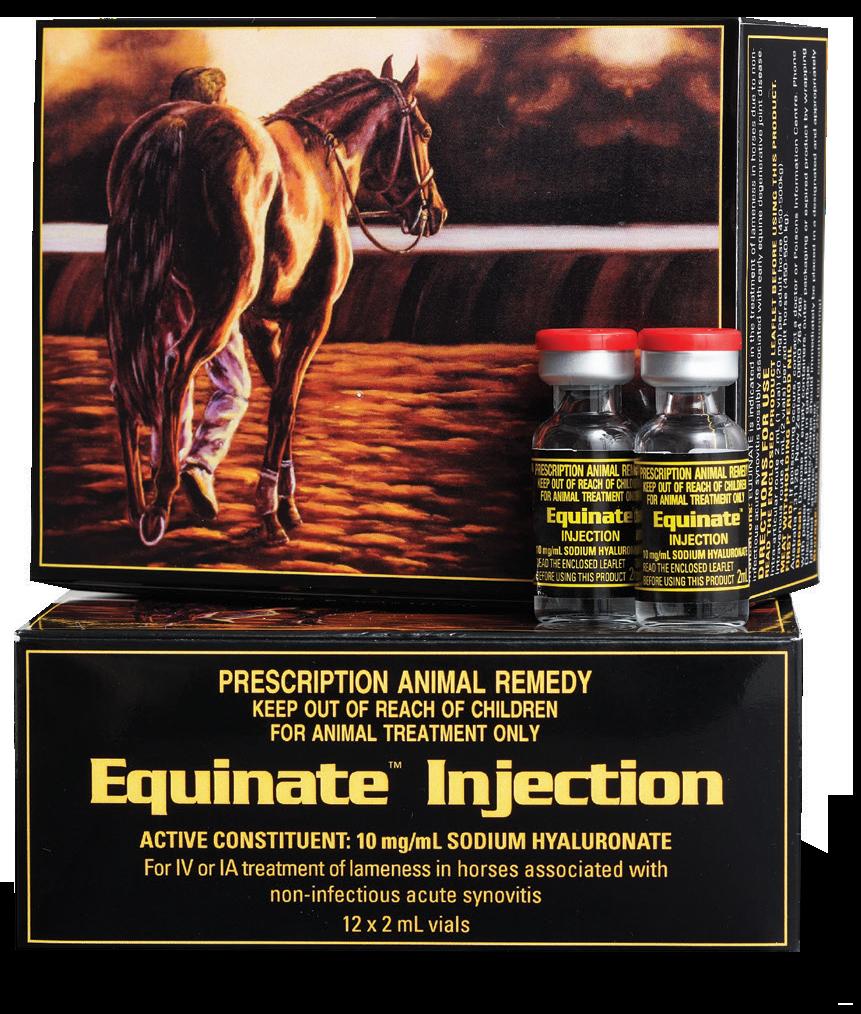
12 x 2mL Pack single dose vials
Equinate Injection is the Hyaluronic Acid (HA) product to meet all your HA requirements. It is designed for intra-articular administration but may also be used intravenously.
Equinate Injection is indicated in the treatment and prevention of lameness in horses due to non-infectious synovitis including those associated with early equine degenerative joint disease.
Equinate Injection may be used alone by intra-articular injection but is more frequently used in association with an intra-articular corticosteroid such as triamcinolone (eg Intra-Log).
Early treatment is an important step in preventing the products of inflammation from damaging articular cartilage and causing irreversible joint disease.


DOSAGE
Intra-articular Injection: The recommended dosage for intra-articular injection is 2mL (1 vial/20mg) per joint. A greater volume e.g. 4mL (2 vials/40mg) may be required in larger joints such as the stifle or shoulder and a lower volume (1mL) in smaller joints such as the distal hock joints. Treatment may be repeated at weekly intervals for a total of three treatments. As with any intra-articular procedure, proper injection site disinfection and animal restraint are important. Excess joint fluid should be aseptically removed prior to intra-articular injection. Care should be taken not to scratch the cartilage surface with the injection needle. Use the smallest gauge needle possible (e.g. 21 or 20 gauge).
Intravenous Injection: 4mL (2 vials/40mg) per adult horse (450-500kg). Treatment may be repeated at weekly intervals for a total of three treatments or be used pre-competition or race to alleviate joint inflammation, subject to the governing competition regulations.
APVMA No. 65128 | ACVM No. A010491 (NZ)
Use your mobile phone to record all your lameness exams. It is often easier to evaluate the lameness on video than live, saves trotting the horse up multiple times and can form part of the horse’s medical record.
Videos allow better comparisons pre- and post- nerve blocks or treatments. Or if you want to upgrade your lameness videography further, try the Sleip gait analysis App (https://sleip.com). It is not cheap to subscribe, but well worth it if you look at a lot of lame horses.

12 x 4mL Pack single dose vials
INDICATIONS
For treatment of lameness associated with non-infectious synovitis and degenerative joint disease.
Suitable for weekly/regular IV maintenance or pre-competition dosing.
Low molecular weight IV formulation.
Equinate I.V. Injection is indicated in the intravenous treatment and prevention of lameness in horses due to synovitis, including those associated with early equine degenerative joint disease.
Early treatment is an important step in preventing the products of inflammation from damaging articular cartilage and causing irreversible joint disease.
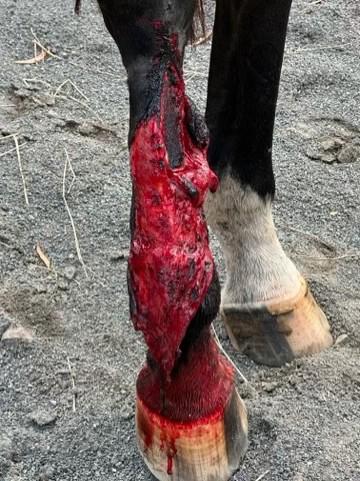

DOSAGE
Intravenous Route: 4 mL (40 mg) per adult horse (450-500 kg). Treatment may be repeated at weekly intervals or as required.
In performance horses, Equinate IV Injection may be administered prior to competition or racing as an aid in reducing joint inflammation and restoring joint function.
The regulations of the relevant competition Authority regarding medication control should always be observed.
To achieve best results in cases of intravenous administration, horses should be rested during treatment.
APVMA No. 62557 | ACVM No. A010089 (NZ)
Manuka honey is a great wound dressing. Manuka honey keeps the wound moist providing better conditions for healing. It also reduces inflammation, promotes tissue regeneration and has known antibacterial properties. The higher the MGO (methylglyoxal) number the better the antibacterial properties. An MGO ≥ 550 is preferred.

Clenbuterol hydrochloride 21.44 µg/g, Sulfadiazine 335 mg/g, Trimethoprim 67 mg/g
INDICATIONS
Whenever possible, bacterial culture and sensitivity testing should be carried out prior to initiating treatment with Randlab’s Airway Tmps. Antibiotic sensitivity testing should also be undertaken in cases of non-responsive or chronic infections.

500g multi dose jar
RANDLAB supports responsible Antimicrobial Stewardship.
For the treatment of respiratory disease in horses caused by organisms susceptible to a sufadiazine/ trimethoprim antibiotic combination, especially those characterised by airways constriction, including bronchospasm and obstruction resulting from bacterial infection, bronchitis and bronchopneumonia. Clenbuterol aids in the removal of respiratory secretions by dilating the airways and increasing the mucociliary clearance rate.
WARNING: Under most governing bodies, clenbutorol now has a prolonged detection time prior to competition. An 18-21 day withholding period is generally recommended. However, veterinarians should confirm the recommended withdrawal time prior to competition with their local Regulatory Authority.
Any powdered medicine can easily be administered as a "sandwich” over the back of the tongue. Cut the top off a 60mL syringe at the 2mL mark with a bread knife or hacksaw. Withdraw the plunger to 60mL. Put two teaspoons of molasses, honey or apple sauce in the syringe, followed by the prescribed dose of Airway Tmps and a further two teaspoons of molasses or honey. Administer to the horse over the back of the tongue. As well as adding some flavouring, the molasses or honey stops the horse spitting out the dose.
DOSAGE
Dose: The label dose rate is one level scoop (9g) orally per 250kg bodyweight in feed twice daily for 6 to 10 days.
One level scoop contains 9g of powder. Twice daily dosing is recommended to maintain therapeutic levels.
Administer on damp food with honey or molasses to avoid sifting of powder. Alternatively, Airway Tmps may be made up into a paste with molasses, honey or Karo (corn) Syrup and administered over the back of the tongue.
APVMA No. 61474 | ACVM No. A010158 (NZ)
Sulfadimidine 430 mg/g, Trimethoprim 86 mg/g, Bromhexine hydrochloride 8.6 mg/g

500g multi dose jar
Whenever possible, bacterial culture and sensitivity testing should be carried out prior to initiating treatment with Randlab’s Bromo Tmps. Antibiotic sensitivity testing should also be undertaken in cases of non-responsive or chronic infections.
INDICATIONS
RANDLAB supports responsible Antimicrobial Stewardship.
For the treatment of respiratory infections in horses due to organisms susceptible to the combination of sulfadimidine and trimethoprim and where mucolytic activity is also desirable.
Bromhexine decreases the viscosity and tenacity of respiratory mucus, facilitating expectoration and suppressing tissue irritation. It also increases the permeability of the alveolar capillary membrane, increasing the concentration of antibacterial agents in respiratory excretions.

ORAL ANTIBIOTIC AND COMBINATIONMUCOLYTIC
2kg multi dose pail
DOSAGE
Dose: 30mg/kg twice daily [e.g. (30mg/kg x 500kg) / (430+86)] = 29g.
Add one level scoop (12g) per 200kg twice daily in feed. Twice daily dosing is recommended to maintain therapeutic levels of active drugs in all situations.
APVMA No. 62490 | ACVM No. A010112 (NZ)
MORE THINGS ARE MISSED BY NOT LOOKING, THAN NOT KNOWING
Dr Leanne Begg (Partner & Registered Specialist in Equine Medicine, REC Equine Specialist Centre)
More things are missed by not looking, than not knowing. The importance of a good, detailed clinical examination cannot be underestimated! Some look. Some look and just know.
THE ONLY ORAL BRONCHODILATOR GEL ON MARKETTHE
230mL
INDICATIONS
As an aid in the treatment of respiratory conditions where bronchodilation or clearance of excess mucus would be beneficial. Useful in the treatment of conditions such as Equine Asthma, Inflammatory Airway Disease, Recurrent Airway Obstruction, exercise induced bronchospasm, pneumonitis and bronchopneumonia.
Promotes clearance of blood from the respiratory tract following an episode of EIPH and of fluid from the lungs following a bronchoalveolar lavage (BAL) procedure.
Some horses may be initially sensitive to the sympathomimetic effects of clenbuterol. This may manifest as agitation, including “colicky” signs, sweating, increased heart rate and tremors. These symptoms are selflimiting and usually resolve within an hour. The horse may be continued on Airway Gel at a reduced rate (start with a half dose) for a few days. The dose should then be slowly increased until the horse tolerates the full recommended dose.
WARNING: Under most governing bodies, clenbutorol now has a prolonged detection time prior to competition. An 18-21 day withholding period is generally recommended. However, veterinarians should confirm the recommended withdrawal time prior to competition with their local Regulatory Authority.

multi dose jar

DOSAGE
Acute conditions: PO 0.8 μg/kg (2mL per 100kg BW) bid initially. May be increased up to 3.2 μg/kg in recalcitrant cases. Administer prior to feeding.
Chronic Conditions: 1-1.5 mL/100 kg bodyweight 30 minutes prior to feeding morning and night as required to provide long term control of symptoms. APVMA No. 65910 | ACVM No. A010655 (NZ)
Horses may develop some tolerance to the pharmacological effects of clenbuterol and pulsed administration (e.g. 10 days on, 5-10 days off) is recommended over continuous administration in chronic conditions.
Globally equine veterinarians have the highest injury rate of any civilian profession. Head injuries account for a large percentage of these.
A few clinics in Australia and overseas have already introduced a policy whereby equine veterinarians and nurses are required to wear hard hats when handling horses. Although riding helmets are currently the most popular choice others, such as ice hockey/cricket helmets, also protect the veterinarian’s face.
Mandatory helmet wearing for equine veterinarians is not far away. No point waiting until your next head injury before introducing the policy into your practice.
Tulloch JSP, Schofield I, Jackson R, Whiting M. 'It's only a flesh wound' - Understanding the safety culture in equine, production animal and mixed veterinary practices. Prev Vet Med. 2025 Aug;241:106541. doi: 10.1016/j. prevetmed.2025.106541. Epub 2025 Apr 22. PMID: 40286392.








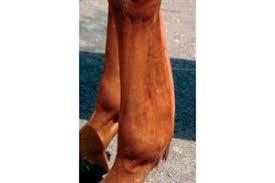























Somedaysyoureallywill need it



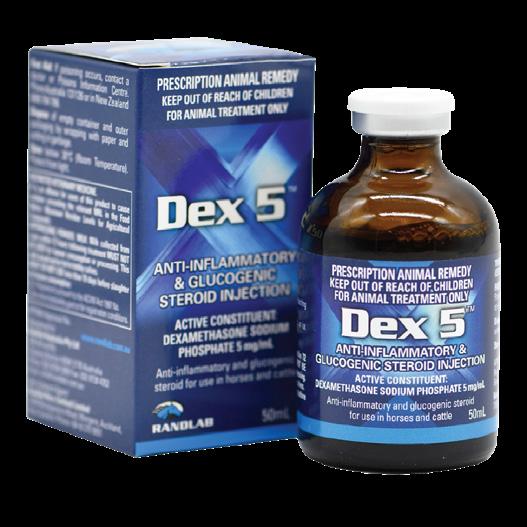



When administered orally dexamethasone provides better absorption than prednisolone granules/tablets.
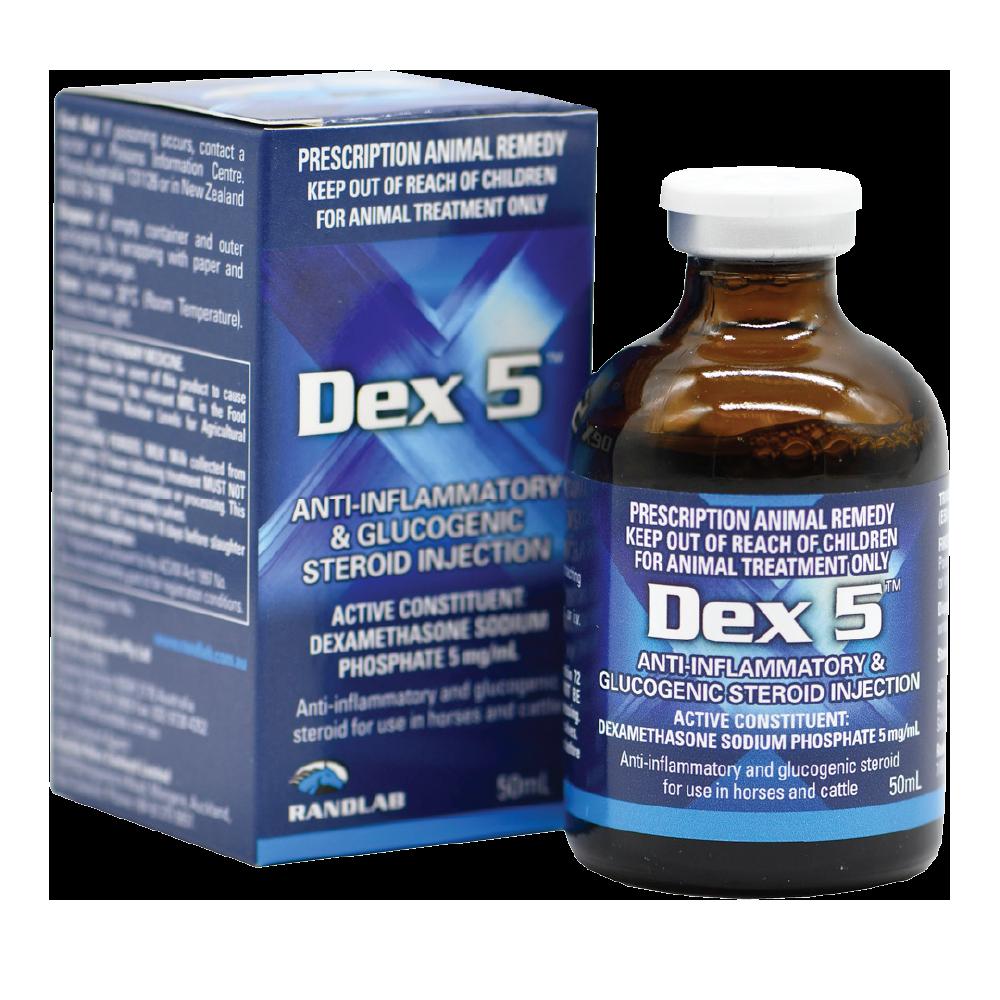
INDICATIONS
50mL multi dose vial
Glucocorticoids have an effect on virtually every cell type and system in the body.
The primary pharmacological actions of dexamethasone in the horse are as an antiinflammatory and immunosuppressive agent. As such, it has been used in the treatment of a wide variety of conditions including:
Anti-inflammatory:
Orthopaedic conditions. May be used alone or to augment the effect of non-steroidal anti-inflammatory drugs (such as phenylbutazone or meloxicam).
Useful in the treatment of conditions such as osteoarthritis, bursitis, tenosynovitis, tendinitis, desmitis, rhabdomyolyis, etc.
• Intra-articularly for inflammatory joint disease or osteoarthritis either in combination with hyaluronic acid or another corticosteroid (eg triamcinolone) or a biologic (IRAP, ACS, PRP, etc), especially when a post-injection flare is anticipated. May also be given IM/IV to reduce the risk of joint flares.
Immunosuppression:
• Equine Asthma including IAD and RAO.
• Dermatitis including allergic dermatitis, pruritis, pemphigus and insect bite dermatitis.
• Auto-immune and immune-mediated diseases such as systemic lupus, rheumatoid arthritis, immune-mediated haemolytic anaemia (IMHA), thrombocytopaenia, polyneuritis equi, purpura haemorrhagica, lupus and other immune-mediated vasculitides.
Adrenal insufficiency
CNS disorders and trauma characterised by increased CSF pressure.
• Neoplasia for amelioration of symptoms and secondary inflammation and regression of some lymphoid neoplasias.
• Shock incl endotoxic, anaphylactic, etc.
• Overnight Dexamethasone Suppression Test for diagnosis of PPID.
Horse Hack: The oral absorption of dexamethasone is superior to prednisolone. Injectable DSP may be administered orally in the fasted horse at a dose rate of approx. 150% the systemic dose. Feeding reduces absorption.
The membrane stabilising effects of dexamethasone are valuable in the treatment of acute rhabdomyolysis ("tie up") and results in a rapid decrease in plasma muscle enzymes.
DEX FOR (NON-SEPTIC) INJECTION SITE REACTIONS
I use IV Dex-5 in conjunction with IV phenylbutazone to treat moderatesevere injection site reactions (eg post-pentosan injection). These are mostly allergic-type reactions and rarely (never?) infected. The Dex-5 reduces the symptoms and recovery time significantly.

Dosing schedules are based on desired effect and vary according to the condition being treated. The response to dexamethasone is known to vary considerably from horse to horse.
Due to DSP’s high potency and multiple untargeted systemic effects, use the lowest dose possible for the shortest period of time to achieve the desired results.
Anti-inflammatory effects: 0.02-0.2mg/kg sid IV or IM. 0.05-0.1mg/kg (5-10mL/500kg BW would be a typical dose).
Immunosuppressive effects: 0.2-0.5mg/kg sid IV or IM. Shock (endotoxic/anaphylactic): 4-6mg/kg IV.
Vasculitis: 0.05-0.2mg/kg IV or IM q12-24h for 2 weeks, then taper over 4-6 weeks.
Purpura haemorrhagica: 0.04-0.2mg/kg sid or bid.
Respiratory disease such as EA/RAO/IAD: 0.05-0.1mg/kg sid IV or IM for 3-4 days and then taper over 3-4 weeks. Interstitial pneumonia incl Equine multinodular pulmonary fibrosis: 0.02–0.04 mg/kg IV or IM.
Inflammatory Bowel Disease (IBD): 005-0.2mg/kg IM for 2-4 weeks.
Dermatitis/pruritis/pemphigus: 0.05-0.1mg/kg sid.
Head/CNS trauma: 0.1-0.3mg/kg IV q6-24h.
Uveitis: 2mg q24-36h subconjunctivally.
Immune-mediated Haemolytic Anaemia: ± 0.05-0.1mg/kg sid IV or IM. for 3-5 days then taper over 7-14 days.
Lymphoma: 0.2mg/kg IV for 5 days initially followed by ongoing immunosuppression.
Intra-articularly: 2-4mg/joint usually in conjunction with another corticosteroid, biological (eg. IRAP, PRP) or hyaluronic acid. Use a new bottle.
Overnight Dexamethasone Suppression Test (DMT) for PPID: Collect baseline serum sample in late afternoon. Administer dexamethasone 0.04mg/kg IM. Collect second serum sample 20 hours post DSP administration. Failure to suppress cortisol levels by < 30mmol/L supports a diagnosis of PPID.
APVMA No. 89900 | ACVM No. A011809 (NZ)
Phenylbutazone

INDICATIONS
The proven combination of the non-steroidal anti-inflammatory drugs (NSAID's) phenylbutazone sodium (anti-inflammatory and analgesia) and sodium salicylate (antipyretric, analgesia and anti-thrombotic) provides effective relief from inflammation and pain especially in conditions of the musculoskeletal system, including:
• Arthritis
• Tendonitis
• Laminitis
• Fractures
• Pyrexias
• Post-operative pain/inflammation
• Bursitis
• Osteitis
• Rhabdomyolysis
• Cellulitis
• Soft tissue inflammation
• Soft tissue inuries/trauma
• Arthrosis
• Tenosynovitis
• Skin inflammation
• Mastitis
• Subchondral bone pain
The combination provides a rapid onset of action (10-15min for sodium salicylate) with prolonged clinical effects (24 hours for phenylbutazone).
Storage: Store between 2° and 8°C (Refrigerate. Do not freeze).
If Platinum Bute IV is kept out of the fridge (eg shelf or car) , the phenylbutazone will slowly degrade. The level of degradation is low and unlikely to be of any clinical significance over the life span of the bottle.
Administer by slow intravenous injection of solution at room temperature. Use of a catheter is strongly recommended to prevent inadvertent peri-vascular injection, which is likely to cause a phlebitis.
Horses: 4.4mg/kg for 1-3 days, reducing to 2.2mg/kg by IV Injection.
Foals: 2.2mg/kg by IV Injection. Foals, especially those younger than 24 hours, have a reduced ability to eliminate phenylbutazone, leading to a longer half-life and greater risk of accumulation and toxicity.
APVMA No. 68303

DON’T BLOW OR SUCK ON THE END OF YOUR STOMACH TUBE. IT’S A ZOONOTIC/OH&S ISSUE
Many of us were taught to blow and suck after passing a nasogastric tube to check that the tube is in the stomach and not in the lungs and or to set up a siphon for gastric decompression.
But these days, we should know better, right? It represents a significant zoonotic risk. I just tense the horse’s neck by pushing it gently away from me and watch the tube descend down the neck in the underlying oesophagus. The faster the tube moves, the easier it is to see. I usually move the tube back and forth in the middle of the neck to make doubly sure. If there is still any doubt, I lay my hand flat against the neck and feel the tube moving under my hand. In hairy horses (eg winter coats) I first wet down the hair over the ventral neck with a handful of water out of the horse’s water trough. Combined with the increased resistance you feel when in the collapsible oesophagus compared the rigid trachea, I am confident my tube is in the right place every time.
1L multi dose pail (new screw top)

30mL multi dose syringe
INDICATIONS
Anti-inflammatory, analgesic and antipyretic oral paste for the relief of pain, fever and inflammation. The analgesic and anti-inflammatory effects are indicated in the treatment of a wide variety of conditions in the horse including traumatic injuries and post-surgery.
Suitable for the treatment of musculoskeletal conditions including bone and joint disorders, soft tissue injuries and inflammation including tendinitis, acute tenosynovitis, desmitis, myositis (incl rhabdomyolysis), capsulitis, bursitis, acute and chronic laminitis osteoarthritis, etc.
Equine Bute Paste may also be used diagnostically to try and differentiate non-specific lameness associated with pain from 'lameness' due to behavioral changes, a so-called "bute trial".
Misoprostol (5μg/kg bid) and/or Sucralfate (20mg/kg bid-qid) are recommended for the prevention or treatment of NSAID-induced gastrointestinal ulceration during long-term administration of phenylbutazone.

500mL multi dose jar
CONSISTENCY MINIMISES QUIDDING
250mL multi dose jar
DOSAGE
Horses: Administer orally prior to feeding. 4.4 mg/ kg (10 mL/450 kg) bodyweight twice daily for the first day; 2.2 mg/kg (5 mL/450 kg) bodyweight twice daily for the next four days; 2.2 mg/kg (5 mL/450 kg) once daily on alternate days. Maximum daily dose should not exceed 4 grams (20 mL).
Ponies: Do not exceed the recommended dose, as ponies exhibit an increased sensitivity to the toxic effects of phenylbutazone.
Administer orally prior to feeding. 2.2 mg/kg (2.5 mL/225 kg) bodyweight twice daily for four days; 2.2 mg/kg (2.5 mL/225 kg) once daily on alternate days or as directed by a veterinarian.
APVMA No. 63283 | ACVM No. A010324 (NZ)
Drs Louise Cosgrove (Exclusively Equine) & Sophie Bolton (Moreton Bay Equine)
Always communicate with your clients. It is the number one reason behind most complaints. As a profession we are often poor at communicating.
Dr Sophie Bolton from Moreton Bay Vets is also big on client communication and follow up. “Keep checking back with the client to make sure that they understand everything that is going on”.
Personally, I like to video many of my follow up/discharge Instructions on my iPhone. Owners and trainers are more likely to refer back to a video than read a report or text message. Videos are also quicker and easier to prepare and can be appended to the horse's electronic medical record.

100mL multi dose vial
INDICATIONS
Meloxicam Injection is a non-steroidal anti-inflammatory drug (NSAID) with preferential COX-2 inhibition. It has a rapid onset of action and medium potency, whilst preserving COX-1 function.
Meloxicam Injection is suitable for the treatment of musculoskeletal disorders, including joint, bone and soft tissue injuries and relief of pain associated with colic and ophthalmic conditions.
Meloxicam is effective for treating inflammation and pain associated with surgery and during postsurgery recovery.
Meloxicam Injection may be used as a short course or as an initial loading dose prior to changing to oral meloxicam.
The long-term use of Meloxicam is safer than other NSAID's such as phenylbutazone or flunixin meglumine.
The withholding period for Meloxicam Injection prior to competition is considered less than other NSAID’s such as phenylbutazone. If using in performance horses, the regulations of the relevant authorities should be consulted.

Dr Mike Whiteford (Victorian Equine Group)
DOSAGE
Horses: 0.6mg/kg BW (3mL/100kg) by intravenous injection APVMA No. 68070 | ACVM No. A010915 (NZ)
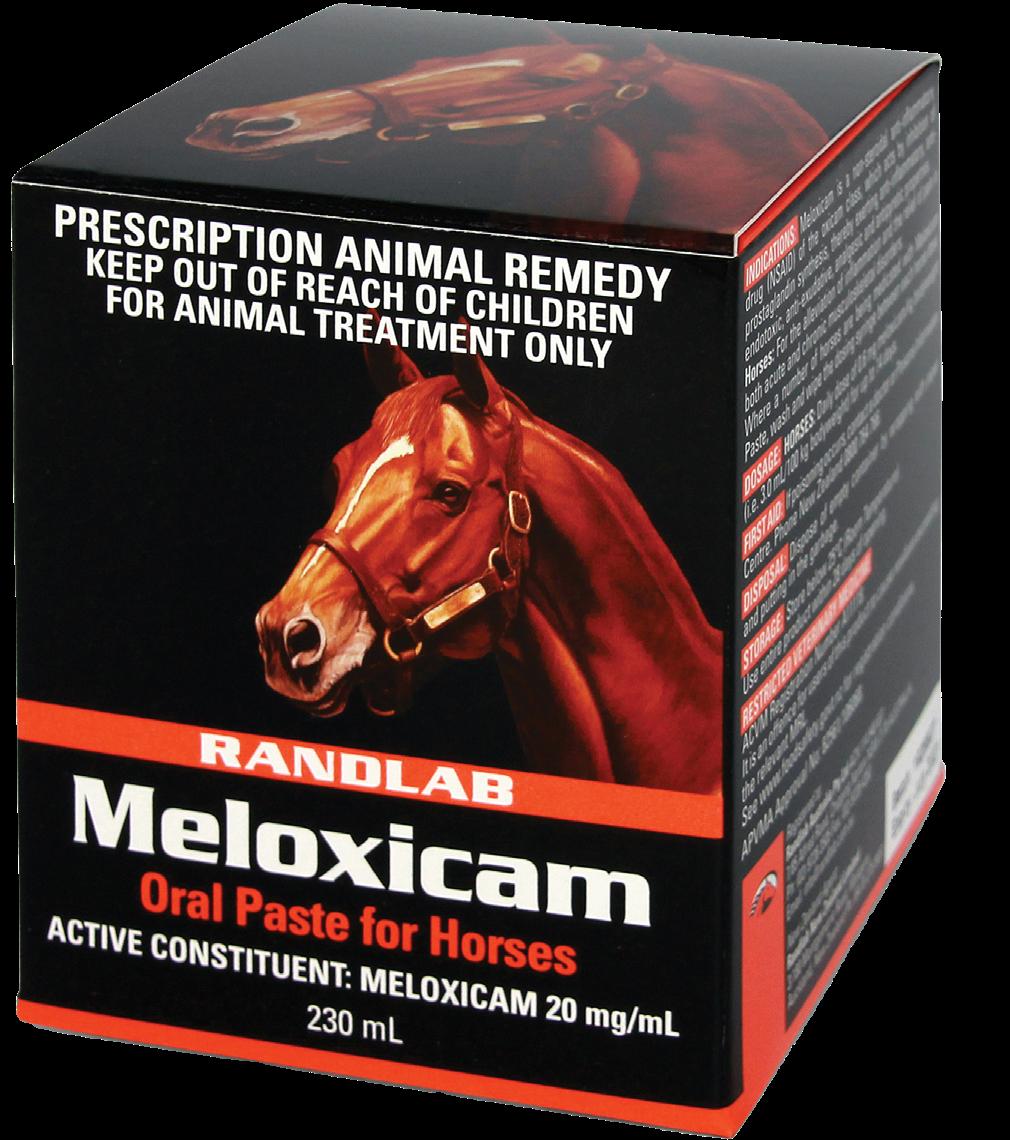
230mL multi dose jar

INDICATIONS
Meloxicam Paste is a non-steroidal anti-inflammatory drug (NSAID) with preferential COX-2 inhibition. It has a rapid onset of action and medium potency, whilst preserving COX-1 function.
Meloxicam Paste is suitable for the treatment of musculoskeletal disorders, including joint, bone and soft tissue injuries and relief of pain associated with colic and ophthalmic conditions.
Meloxicam is effective for treating inflammation and pain associated with surgery and during postsurgery recovery.
Meloxicam Injection may be used as a short course or as an initial loading dose prior to then changing to oral meloxicam.
The long-term use of Meloxicam is safer than other NSAID's such as phenylbutazone or flunixin meglumine.
The withholding period for Meloxicam Paste prior to competition is considered less than other NSAID’s such as phenylbutazone. If using in performance horses, the regulations of the relevant authorities should be consulted.

DOSAGE
Horses: Daily dose of 0.6 mg/kg bodyweight (i.e. 3.0 mL/100 kg bodyweight) for up to 14 days.
Foals: 0.6mg/kg twice daily dosing is required in foals < 7 weeks old due to more rapid clearance.
APVMA No. 82561 | ACVM No. A011118 (NZ)
PIGTAIL INDWELLING DRAINS FOR DRAINAGE OF EFFUSIONS
Dr Laura Nath (Equine Medicine Specialist & Cardiologist at Equinemed) I like to use UreSil (uresil.com/) 14F pigtail drains for draining any effusions (pleural, pericardial, abdominal), pneumothorax or abscesses. You can introduce them with either a blunt or sharp trocar. The pig tail curls up internally to help prevent them falling out. But I still like to suture them in. Super soft plastic with multiple fenestrations and very comfortable. Can leave in situ for many days. And they can be re-sterilised. [Yik!]

250mL bottle
INDICATIONS
Meloxicam Forte Oral Suspension is a non-steroidal anti-inflammatory drug (NSAID) with preferential COX-2 inhibition. It has a rapid onset of action and medium potency, whilst preserving COX-1 function.
Suitable for the treatment of musculoskeletal disorders, including joint, bone and soft tissue injuries and relief of pain associated with colic and ophthalmic conditions.
Meloxicam is effective for treating inflammation and pain associated with surgery and during postsurgery recovery.
The long-term use of Meloxicam is safer than other NSAID's such as phenylbutazone or flunixin meglumine. The withholding period for Meloxicam Forte Oral Suspension prior to competition is considered less than other NSAID’s such as phenylbutazone. If using in performance horses, the regulations of the relevant authorities should be consulted.

DOSAGE
Shake bottle well before use.
Horses: Daily dose of 0.6 mg/kg bodyweight (i.e. 10mL suspension/500kg BW) for up to 14 days.
Can be used mixed in feed, although not advised in competition stables.
Foals: 0.6mg/kg (i.e. 2ml/100kg BW) twice daily for up to 7 days. Twice daily dosing is required in foals < 7 weeks old due to more rapid clearance.
APVMA No. 89813
Meloxicam Forte Oral Suspension, especially in the feed, is a good option for horses requiring long-term, effective antiinflammatory treatment, such as horses with chronic laminitis or horses with osteoarthritis.
Dr Brodie Argue (Tamworth Equine Veterinary Services) is 6ft 13in and a bit. No wonder he does not like bending down to do those pesky four-point blocks that are oh so close to the ground.
Brodie prefers to use a 25G butterfly catheter with extension tubing to do his distal limb blocks. That way he can place the needle before moving out of the firing range to inject the local. Making sure his head is well out of reach of any hostile hooves. I tried this technique this week and am a convert. CAN'T ARGUE WITH THIS ONE
Flunixin meglumine equivalent to Flunixin 50 mg/mL
INDICATIONS
For the alleviation of visceral pain and inflammation associated with colic and the normalisation of peristalsis.

For the alleviation of inflammation and pain associated with musculoskeletal disorders. For the treatment of inflammatory ocular conditions such as uveitis and pre- and post-eye surgery.
At lower doses than used for anti-inflammatory effects, flunixin reduces the haemodynamic changes associated with endotoxaemia/endotoxic shock.
WARNING: Prolonged detection times leading to a positive drug test following the administration of flunixin have been reported in the horse. This is believed to be due to drug “recycling” with the horse ingesting previously excreted flunixin. It is recommended that boxed competition horses be moved to a different stall after the normal excretion period (~96 hours) to prevent potential re-ingestion of excreted flunixin.
Colix Injection may be administered orally at a dose rate of 1.1-1.3mg/kg. The injection can be administered mixed with molasses or squirted directly over the back of the horse’s tongue. The onset of action after oral dosing is generally within 2 hours, peak response 12-16 hours and duration of action up to 30 hours.

100mL multi dose vial
DOSAGE
Injection reactions, including clostridial myositis, may develop following intramuscular injections of flunixin in horses and should be avoided.
Musculoskeletal disorders: 1.1 mg per kg (1mL/45kg) bodyweight one to three times daily by intravenous injection for up to 5 days.
Colic: Alleviation of pain associated with colic: 1.1 mg per kg bodyweight I.V administration is recommended for prompt relief. May be repeated if signs of colic recur. Cause of colic should be determined and treated with appropriate therapy. The visceral analgesic effects of flunixin should last for approx. four hours. "Breakthrough" abdominal pain following flunixin injection should be considered an indication for further assessment for colic surgery.
Endotoxaemia (incl at risk of endotoxaemia): 0.25mg/kg q8h administered IV to interrupt eicosanoid production and inhibit the associated endotoxin-induced haemodynamic effects. APVMA No. 88443 | ACVM No. A011471 (NZ)

Sulphadimidine 430 mg/g, Trimethoprim 86 mg/g

RANDLAB supports responsible Antimicrobial Stewardship.

Whenever possible, bacterial culture and sensitivity testing should be carried out prior to initiating treatment with Randlab’s Tri-Sil Powder. Antibiotic sensitivity testing should also be undertaken in cases of non-responsive or chronic infections.
Tri-Sil antibiotic powder is for the treatment of infections known or suspected to be sensitive to the sulphadimidine and trimethoprim combination, such as respiratory, urogenital, synovial, soft tissue cellulitis and temperatures of unknown origin.
Organisms known to be sensitive to the combination of TMPS include: Actinobacillus equuli, Staphylococcus aureus, Escherichia coli, Streptococcus equi subspecies equi, Streptococcus equi ss zooepidemicus, Pasteurella caballi, Proteus vulgaris, etc.
WARNING: Oral administration of sulfonamides + trimethoprim may occasionally be associated with the development of severe, acute diarrhoea in the horse. This may even occur several weeks after finishing the course. Should this occur, the TMPS should be stopped immediately and appropriate treatment initiated.
Tri-Sil Powder may be administered in the horse's feed or over the back of the tongue. See Horse Hack on p20 for further information about oral administration.

Scan the QR code to download the EVA & UMelb Pocket Guide for Antimicrobial Use in Horses.
DOSAGE
Use the enclosed scoop.
One level scoop provides 5g sulphadimidine plus 1g trimethoprim.
HORSE: 30mg/kg twice daily combined sulphadimidine + trimethoprim dose.
For example, 500kg horse: 30mg x 500kg = 15g
Each scoop contains 6g of combined active. 15g =2.5 scoops
The 500g jar contains enough TMPS for a 16-day course for a 500kg horse.
Before filling scoop, rotate container horizontally to ensure consistent filling.
APVMA No. 92858 | ACVM No. A011661 (NZ)
DO NOT COMBINE RIFAMPIN WITH DOXYCYCLINE OR TMPS
Dr Laura Hardefeldt (Melbourne Uni)
Rifampin reduces the availability of TMPS and doxycycline by up to 50%.
Both TMPS and doxycycline already have great penetration into most soft tissues, such as joints and abscesses, so there is no need to add rifampin. Keep rifampin for “rattles” foals in combination with a macrolide.
Check out the AVA's newly released Antimicrobial Prescribing Guidelines for Horses in Australia published in the Australian Veterinary Journal (Hardefeldt et al, 2025).

INDICATIONS
RANDLAB supports responsible Antimicrobial Stewardship.
Whenever possible, bacterial culture and sensitivity testing should be carried out prior to initiating treatment with Randlab’s Tri-Sulfox Injection. Antibiotic sensitivity testing should also be undertaken in cases of non-responsive or chronic infections.
Tri-Sulfox Injection has broad-spectrum activity against a wide range of both gram-positive and gram-negative bacteria incl:
• Actinobacillus equuli
• Actinomyces spp
• Bacillus anthracis
• Bordetella spp
• Brucella spp
• Campylobacter spp
• Clostridium spp
• Corynebacterium spp
• Enterobacter spp
• Escherichia coli
• Fusiformis spp
• Haemophilus spp
• Klebsiella spp
• Pasteurella spp
• Pneumococcus spp
• Proteus spp
• Salmonella spp
• Shigella spp
• Staphylococcus spp
(incl some S. aureus)
• Streptococcus spp
Pseudomonas aeruginosa, Enterococcus faecalis and Enterococcus faecium are intrinsically resistant to Tri-Sulfox. Mycobacterium tuberculosis, Mycoplasma spp, Leptospira are also resistant. In vivo activity against anaerobes is generally poor.
WARNING: TMPS antibiotics should not be contemporaneously administered to anaesthetised or sedated horses.
Rarely these horses may develop dysrhythmias, leading to hypotension and even death.
WARNING: Administration of antibiotics may occasionally cause acute, severe diarrhoea.
100mL multi dose vial
Scan the QR code to download the EVA & UMelb Pocket Guide for Antimicrobial Use in Horses.
DOSAGE
TMPS is inactivated in the presence of purulent material and abscesses, etc. These should be surgically drained and lavaged prior to using Tri-Sulfox.
Label dose: 3mL/50kg BW bid by IV Injection.
TMPS is a time-dependent antibiotic, therefore twice daily dosing is required.
Current NCAS recommended dose rate:
30mg/kg BW bid by slow IV Injection.
The concentration of TMPS in the bottle of Tri- Sulfox Injection is 200+40=240mg/mL.
Therefore a 500kg horse will require:
(30x 500)/240 =62mL bid.
APVMA No. 91644
Solution is irritant if given perivascularly. The use of catheters/cannulas will reduce the risk of inadvertent perivascular administration and is strongly recommended.


(Sulphadoxine 200mg/mL, Trimethoprim 40mg/mL)
For the treatment and control of bacterial infections susceptible to sulfadoxine and trimethoprim for over 35 years..
100mL Vial
APVMA Approval No. 91644
(Sulphadimidine 430mg/g, Trimethoprim 86mg/g)
For the treatment of respiratory, urogenital and non-specific infections in horses due to sulphadimidine and trimethoprim susceptible organisms.
500g Jar
APVMA Approval No. 92858


TMPS Oral Paste for Horses
(Sulfadiazine 400mg/mL, Trimethoprim 86mg/g)
Potentiated sulfonamide antimicrobial with bactericidal activity. Available in three convenient sizes.
250g, 500g, 1L
APVMA Approval No. 83452

(Sulfadimidine 430mg/g, Trimethoprim 86mg/g, Bromhexine hydrochloride 8.6mg/g)
Oral mucolytic and antibacterial for the treatment of respiratory infections characterised by increased mucus production.
Available in two convenient sizes.
500g, 2kg
APVMA Approval No. 62490

(Gentamicin (as sulphate) 100 mg/mL)
The #1 choice for gram-negative infections
100mL Vial
APVMA Approval No. 90730

(Metronidazole 500mg/mL)
For the treatment of anaerobic bacterial and protozoal infections caused by metronidazole-sensitive organisms.
1kg Pail
Supplied under APVMA Permit No. 84510

(Povidone-Iodine 100mg/g)
Antibacterial and antifungal skin and wound ointment. Cost effective.
250g Jar
APVMA Approval No. 62637
(Clenbuterol hydrochloride 21.44 µg/g, Sulfadiazine 335 mg/g, Trimethoprim 67 mg/g)
Oral bronchodilator and antibacterial for the treatment of respiratory diseases whenever antibiotic cover and bronchodilation is required.
500g Jar
APVMA Approval No. 61474



500g tub
RANDLAB supports responsible Antimicrobial Stewardship.
INDICATIONS
1kg jar
Whenever possible, bacterial culture and sensitivity testing should be carried out prior to initiating treatment with Randlab’s TMPS Paste. Antibiotic sensitivity testing should also be undertaken in cases of non-responsive or chronic infections.
Randlab’s TMPS Oral Paste has a broad spectrum of activity against the common Gram-positive and Gram-negative bacteria including:
• Streptococci
• Escherichia coli
• Bordetella
• Corynebacterium
• Hemophilus
• Listeria monocytogenes
• Dermatophilus congolensis
• Bacillus
• Brucella
• Fusiformis
• Klebsiella spp
• Nocardia
• Pasteurella
• Salmonella
• Shigella
• Staphylococci
• Proteus spp.
Pseudomonas aeruginosa, Enterococcus faecalis and Enterococcus faecium are intrinsically resistant to TMPS. Mycobacterium tuberculosis, Mycoplasma spp, Leptospira are also resistant. In vivo activity against anaerobes is generally poor.
The combination of TMPS also has some effect against infections caused by protozoa (e.g. coccidia and Toxoplasma infection)
Randlab’s TMPS Oral Paste is useful in the treatment of respiratory infections, with high lung tissue levels achieved (although Randlab’s Airway Tmps and Bromo Tmps are designed specifically for respiratory infections), soft tissue infections, abdominal infections, joint infections, infections of the CNS, uterus/placenta and urinary tract.
WARNING: Oral administration of trimethoprim + sulfonamides may occasionally be associated with the development of severe, acute febrile diarrhoea in the horse. This may even occur several weeks after finishing the course. Should this occur, the TMPS should be stopped immediately and appropriate treatment initiated.
SOMOREMUCH CONVENIENT THAN TUBEA
250g tub
Scan the QR code to download the EVA & UMelb Pocket Guide for Antimicrobial Use in Horses.
DOSAGE
1mL of TMPS Paste weighs approx 1.2g. Therefore a 250g pot contains approx 208mL of paste and so forth.
Administer directly into the mouth from a dosing syringe.
Adult: 24-30mg/kg twice daily combined sulfonamide+ trimethoprim dose.
[e.g. 500kg horse = 30mg x 500kg/(400+86 mg/g) = 31g (31g = 26mL)].
Foals: 15-30mg/kg twice daily.
Dose rate equivalent to 5-6mL/100 kg twice daily (12 hourly).
APVMA No. 83452
Metronidazole 500 mg/g (1g Metronidazole paste is equivalent to 1mL)
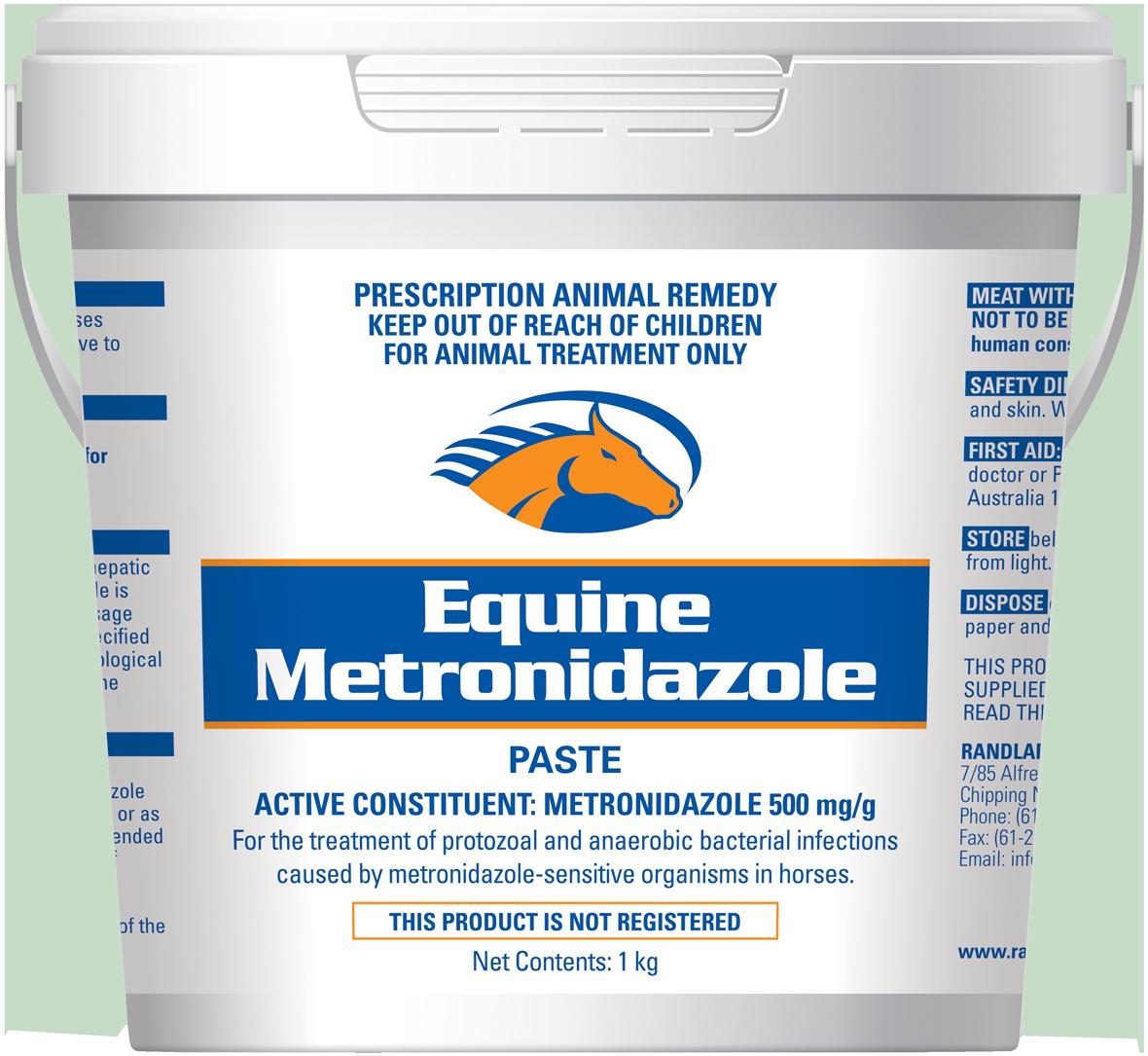
1kg multidose pail
INDICATIONS
RANDLAB supports responsible Antimicrobial Stewardship.
Don't forget to return your completed Metronidazole APVMA permit form to Randlab. Spare copies of the form are available at randlab.com on the Metronidazole page.
For the treatment of infections in horses caused by anaerobic bacteria such as Clostridium spp, Bacteroides spp (incl penicillin resistant B. fragilis), Fusobacterium and protozoa such as Giardia and Trichomonas spp.
For the treatment of infections where anaerobic bacteria are implicated or suspected such as pleuropneumonia, sinusitis, tooth root infections, enteritis, colitis and some cases of deep foot infection, chondritis and metritis.
Metronidazole is the antimicrobial of choice for the treatment of Acute Febrile Diarrhoea or chronic diarrhoea due to anaerobic bacteria such as Clostridial infections.
Metronidazole in combination with either oxytetracycline or chloramphenicol has been suggested for the treatment of proliferative enteropathy caused by Lawsonia intracellularis.
Metronidazole Paste may also be administered per rectum at approximately double the oral dose rate.

Administer orally. Give 20mL Equine Metronidazole Paste (equivalent to 10g metronidazole) per 500kg bodyweight every 12 hours for 5 days or as directed by a veterinarian.
Adult: 15mg/kg qid or 20mg/kg bid orally
Foal: 10-20mg/kg bid orally
APVMA No. 94069
WARNING: Anorexia is common following oral Metronidazole use. It is less common with rectal administration but is still likely to occur.

100mL multi dose vial
RANDLAB supports responsible Antimicrobial Stewardship.
INDICATIONS
Gentamicin is active against a wide range of bacteria. It is the drug of choice for treatment of gramnegative infections (incl. Pseudomonas spp, Proteus, Klebsiella). It is also effective against Staphylococci. Gentamicin has no activity against anaerobes, streptococci and enterococci and limited activity against Salmonella spp.
Gentamicin is most frequently used in combination with a beta-lactam antibiotic (eg penicillin, cephalosporin, ampicillin) to achieve a broader spectrum of activity.
Gentamicin (0.5-2mL diluted 1:2 with sterile saline) is commonly used by intra-articular injection. It may also be used for regional limb perfusion (either IV or intraosseous) or impregnated in PMMA beads. Gentamicin may be administered by nebuliser for treatment of respiratory tract infections including pneumonia.
Gentamicin is commonly used as part of an intrauterine flush or for the intrauterine treatment of uterine infections.
The label dose of Randlab's Gentamicin has recently been amended to show the current accepted dose rate of 6.6mg/kg sid.
Gentamicin is a concentration-dependent antibiotic and as such higher doses at less frequent intervals is recommended. This increases bacterial killing, increases bacterial susceptibility and decreases potential toxic effects and the risk of developing resistant bacterial strains.


Scan the QR code to download the EVA & UMelb Pocket Guide for Antimicrobial Use in Horses.
DOSAGE
Adult; 6.6-9.7mg/kg sid by IV or IM injection. Foal (<14 weeks); 8.8-12mg/kg q24-36h
Intrauterine; 1-2g buffered with equal volume of 7.5% sodium bicarbonate and diluted in 200mL isotonic saline daily for 3-7 treatments.
Intra-articular; 50-500mg per joint depending on joint size. Diluted 1:2 with sterile saline.
Regional Limb Perfusion: Add 10mL gentamicin to 50mL saline or prilocaine.
Nebuliser: 100-200mg diluted 1:1 with isotonic saline sid-qid.
APVMA No. 90730
Intralesional injection of Equimune (NovaVive), an immunostimulant derived from Mycobacterium cell wall fraction, is a great treatment for sarcoids.
I use a 25G 5/8” needle to infiltrate the base of the sarcoid with Equimune at a rate of about 1.5mL (a vial) per 2cm2 . Multiple entry points may be necessary to get all the way around the sarcoid base. I try and inject into the sarcoid, but most of the time, it is too tight, and I end up just laying it below the base.
For larger sarcoids, I debulk the sarcoid with a scalpel prior to using the Equimune. If the horse has multiple sarcoids, you only need to do the main ones.
Especially useful for sarcoids around the eyes or where other treatment modalities have failed. Some minor swelling at the injection site a few days after Equimune injection is expected and a good sign that there has been stimulation of the immune/inflammatory system.
Occasionally you need to repeat the treatment and rarely do a third round. I wait four months before repeating the injection.
I have a 100% success rate and have had no side effects.

50mL multi dose vial

INDICATIONS
Butorphanol tartrate is a synthetic, mixed opioid agonist/antagonist with analgesic and sedative properties. It is generally used in combination with a sedative (such as an alpha-2 agonist) to avoid initial excitatory activity. Butorphanol has wide application in equine veterinary practice including:
• Restraint during standing surgery (eg arthroscopy, fracture repair, airway surgery)
• Restraint during minor surgical procedures (eg suturing, eye procedures, etc)
• Restraint during diagnostic procedures (eg yearling repository , gastroscopy)
• Relief of pain associated with colic for up to four hours
• Anaesthetic pre-medication in combination with an α2-agonist
• Component in balanced general anaesthesia (esp for painful procedures)
• Post-operative and general pain management
• Potent anti-tussive
WARNING: Butorphanol should not be used in patients with liver disease as the drug cannot be efficiently eliminated and may accumulate to toxic levels.
Premedication with an alpha-2 and butorphanol reduces cough associated with invasive airway procedures such as bronchoalveolar lavage (BAL) and tracheal washes.

10mL multi dose vial
Butorphanol may be administered intramuscularly at a higher dose and/or more frequently as systemic absorption via this route is only about 37%. However, dose and dosing interval should be based on the response to treatment.
Analgesia: 0.1-0.4mg/kg q3-4h IV or 0.04-0.2mg/kg IM.
CRI: Initial loading dose 17.8µg/kg followed by 13-24µg/kg/hr.
COLIC PAIN: 0.01-0.02mg/kg IV alone or in combination with an alpha-2 agonist (eg xylazine 0.02-0.1mg/kg IV).
Sedation: ALONE; 0.1-0.13mg/kg (=1-1.3mL/100kg BW) by intravenous injection q3-4h. IN COMBINATION; 0.02-0.05mg/kg IV in combination with xylazine (0.5-1.0mg/kg), detomidine (10-40 µg/ kg), romifidine (80-100 µg/kg) or acepromazine (0.02-0.05mg/kg).
PRE-ANAESTHETIC; 0.01-0.04mg/kg IV following administration of an alpha-2 agonist (eg xylazine 0.1-0.5mg/kg IV).
FIELD ANAESTHESIA: Sedate with xylazine (1mg/kg IV or 2mg/ kg IM) followed by butorphanol (0.02-0.04mg/kg IV). Wait until horse heavily sedated (~10 minutes) before administering ketamine (2.2mg/kg IV). Combination improves induction, increases analgesia and increases recumbency time by 5-10 minutes.
Antitussive: 0.02 mg/kg IM bid-tid.
Foals: ALONE; 0.1-0.2mg/kg IV or IM.
IN COMBINTATION; 0.5 mg/kg xylazine followed by 0.04 mg/kg butorphanol.
APVMA No. 87965
Dr Trent Raeburn (Moreton Bay Vets)
Avoid additional stress. Take the time to make sure you have packed everything you could possibly need when you go out for an ambulatory call. And don’t forget to always have a functional PPE kit in your car.
On arrival, always park in the shade [spoken like a true Queenslander].
50mL multi dose vial

INDICATIONS
Ketamine-based anaesthesia is the most common anaesthetic technique for short procedures in the field. The duration of anaesthesia is generally less than 30 min.
Ketamine-based anaesthesia can also be used as an induction agent prior to intubation and inhalation anaesthesia.
Intravenous anaesthesia may also be maintained following α2-agonist + ketamine induction with “Triple Drip” Continuous Rate Infusion (CRI). See Dosage section.
Ketamine also inhibits NMDA-receptors so may be adjunctively useful for control of pain.
WARNING: Horse must be adequately sedated with an a-2 agonist prior to administering ketamine, otherwise effective induction and anaesthesia will not be achieved.
Sedatives other than xylazine may be substituted in protocols below prior to ketamine anaesthesia, e.g. detomidine (0.02 mg/kg) or romifidine (0.1 mg/kg).
Induction of anaesthesia: Premedicate with an α2-agonist (e.g. xylazine 1.1 mg/kg IV or 2.0 mg/kg IM) given 5-10 minutes before induction of anaesthesia with ketamine. Horse must be adequately sedated before administering the ketamine (2.2 mg/kg IV). Total anaesthetic time is short but can be prolonged by administering one-third to one-half of the induction dose or by instigating “Triple Drip” CRI (see below).
Butorphanol (0.02-0.04 mg/kg IV) may also be added to the original xylazine in highly strung horses (such as young horses, Thoroughbreds or Arabs) 5-10 minutes prior to Ketamine administration.
Diazepam (0.03 – 0.1 mg/kg IV) may also be administered along with xylazine prior to ketamine to improve induction, improve muscle relaxation during anaesthesia and prolong anaesthesia by about 5-10 minutes.
Field anaesthesia/“Triple Drip”: Add 500mg xylazine and 2000mg ketamine to 1L of 5% guaifenesin in dextrose or 0.9% saline.
INDUCTION: 1.1 mL/kg by rapid IV injection.
MAINTENANCE: 2.0-4.5 mL/kg/hr to effect. “Triple drip” should not be used for anaesthetics greater than 1 hour in duration unless oxygen supplementation and respiratory support is provided.
For foals & ponies: Add 250mg xylazine and 500mg ketamine to 500mL 5% guaifenesin solution. For induction give 1.1 mL/kg IV rapidly. For maintenance 2-3mL/kg/hr to effect.
CRI for analgesia: Loading dose of 0.6 mg/kg IV followed by CRI of 0.4-0.8 mg/kg/hr. Can be increased to 1.2mg/kg/hr if required. To prepare CRI solution, add 30mL ketamine to 1L bag of saline (= 3mg/mL) and administer IV over 8 hours at a rate of 125 mL per hour for a 500kg horse.
Foals treatment of seizures: 0.02 mg/kg/min CRI.
APVMA No. 87454

Total IntraVenous Anaesthesia/TIVA (eg "Triple Drip"), when appropriate, is more environmentally friendly for shorter procedures (up to an hour) than inhalation anaesthesia. Isoflurane and sevoflurane are both potent greenhouse gases with a global warming potential far exceeding that of carbon dioxide.
One-hour of gaseous anaesthesia with either one of these agents produces emissions equivalent to driving 296km. There is a growing trend in companion animal practice towards more TIVA anaesthetics.

INDICATIONS
Sedator is a dose-dependent sedative and analgesic. Sedator may be used to facilitate examinations, x-rays, minor surgical procedures, transport etc. It may also be used to control pain including that of the uncomplicated equine colic case, with analgesia lasting as long as 12 hours in some instances. Common uses for Sedator would include: Examinations e.g. endoscopy (incl gastroscopy), rectal palpation, gynaecological examinations, lameness examinations and all diagnostic imaging procedures.
• Ophthalmic examinations and minor procedures.
• Dental examinations and procedures.
• Minor surgical procedures e.g. debridement and suturing of wounds, removal of skin tumours, fractued jaw repair, hoof care and castration. Pre-anaesthetic sedative when used in combination with anaesthetic agents
• Treatment and procedures in young or fractious horses e.g. nasogastric tubing, clipping and shoeing.
• Effective analgesia in treatment of colic cases. Sedation and analgesia in the management of serious injuries.
• Safe handling of fractious animals. Horses should not be fed until they have fully recovered from sedation due to the risk of oesophageal choke.
WARNING: Intravenous potentiated sulphonamides are contraindicated in sedated or anaesthetised horses as potentially fatal dysrhythmias may occur.
DOSAGE
20mL multi dose vial
Dosage of Sedator should be determined with respect to the desired depth and duration of sedation required, temperament of the horse and concurrent environmental stimuli.
Lower doses may be adequate and should be used whenever possible.
Dosage: 0.1 mL to 0.8 mL per 100 kg bodyweight. Administration is by slow intravenous or the intramuscular route.
For analgesia in COLIC until diagnosis is confirmed, recommended dose is 20-40 μg/kg BW (0.2-0.4 mL/100 kg BW).
The full analgesic effect is established in 5-15 minutes following administration. If the desired level of sedation is not achieved following administration of a low dose, an additional dose may be given.
The dose response can be estimated as follows:
Constant Rate Infusion (CRI): Constant Rate Infusion (CRI) for analgesia: Loading dose 0.01mg/ kg followed by 15mg detomidine (1.5mL) in 1L of Ringers Solution administered at a constant rate infusion of 0.6μg/kg/min. This equates to approximate 6 drops/second IV. Adjust to effect.

Dr David Bartholomeusz (Hoof n Paws)
Accept that you are going to make mistakes. Learn from your mistakes. Then move on! It’s in the past and you can’t change it.

INDICATIONS
Randlab Xylazine 100 is an injection containing 100 mg/mL (10% w/v) of Xylazine for use as a sedative, analgesic and skeletal muscle relaxant in horses.
Randlab Xylazine 100 is an extremely effective sedative in the horse, allowing a number of procedures to be more easily conducted e.g. ophthalmic, dental or endoscopic examinations, wound suturing, rectal examination, stomach tubing, examination of fractious horses (incl lameness exam), diagnostic imaging, bandage application and removal etc. Xylazine in combination with appropriate local anaesthesia may be suitable for minor standing surgeries such as castration, dental procedures, draining abscesses, etc.
Xylazine may provide short acting analgesia in cases of colic facilitating examination and transport. The visceral analgesia effect of xylazine has been demonstrated to be superior to that produced by butorphanol. Xylazine decreases digital blood flow for up to 8 hours after administration.
Randlab Xylazine 100 is also a very effective premedicant for both ketamine and barbiturate anaesthesia.
WARNING: Some horses may exhibit “xylazine rage” following administration of the drug. This usually manifests as aggression, such as kicking or biting, especially after any sudden or unexpected movement. “Xylazine rage” represents a risk to handlers. It can be minimised by using the lowest appropriate dose of xylazine or by combining xylazine with either acepromazine or butorphanol.
Inadvertent intra-arterial (e.g. carotid artery) administration of xylazine will result in extreme excitement and convulsions. The horse will normally recover within 10 minutes but is at high risk of sustaining an injury whilst convulsing.
50mL multi dose vial
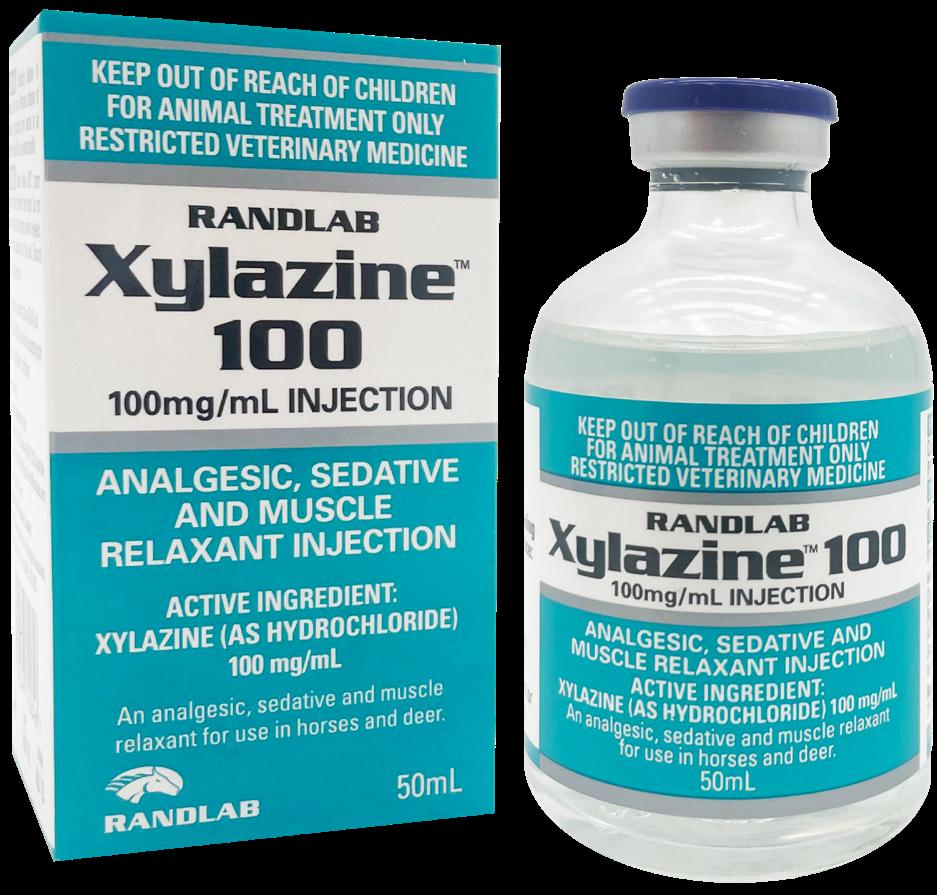
DOSAGE
Horses: Dose dependent effect: 2.0-5.0mL per 450kg BW by slow IV injection. Draft breeds are more sensitive to the effects of xylazine and the dose should be lowered accordingly. Sedation: 1.1 mg/kg IV or 2.2 mg/kg IM. Allow animal to rest quietly until full effect is reached.
Colic: 0.2-0.5mg/kg IV will provide analgesia for 20-30 minutes. For longer duration, 0.6-1mg/kg IM will provide analgesia for 1-2 hours.
CRI for analgesia: 0.5-1.1 mg/kg IV followed by 0.72 mg/kg/hour.
Caudal epidural: 0.03-0.35 mg/kg in first coccygeal space. 3-5 hour duration of effect. Field induction: 1.1mg/kg IV. Wait until full sedation is achieved (5-10 min). If adequate sedation does not occur, re-dose with half the original dose of xylazine. Then follow with 2.2mg/kg IV of ketamine. Butorphanol (0.02-0.04mg/kg IV) or diazepam (0.03 - 0.1mg/ kg IV) may be added before the ketamine for additional sedation, analgesia or muscle relaxation respectively.
"TRIPLE DRIP" ANAESTHESIA: Add 500mg xylazine and 2000mg ketamine to 1L of 5% guaifenesin in dextrose or 0.9% saline.
Induction; 1.1 mL/kg IV rapidly.
Maintenance; 2.0 - 4.5 mL/kg/hr to effect. “Triple drip” should not be used for anaesthetics greater than 1 hour in duration unless oxygen supplementation and respiratory support is provided.
Foals & Ponies: Add 250mg xylazine and 500mg ketamine to 500mL 5% guaifenesin solution. For induction give 1.1 mL/kg IV rapidly. For maintenance 2-3mL/kg/hr to effect.
Reversal: Tolazoline, atipamezole or yohimbine may be used alone or in combination to reverse the effects of xylazine or speed recovery.
APVMA No. 87320 | ACVM No. A011802 (NZ)

Dr David Bartholomeusz (Hoof n Paws)
When you are handling the horse, talk to the horse out loud. Calmy and quietly. This will also help relax you on the inside, which will help calm the horse as well.

30mL multi dose syringe
INDICATIONS
• An aid in training fractious horses.
• To calm nervous horses and reduce stress.
• In minor surgical procedures in which a general anaesthetic is not required.
• To sedate horses that will not allow IV or IM sedation.
• In non surgical procedures such as shoeing, clipping and dentistry.
• Handling mares during mating or other gynaecological procedures.
• Calming of horses to assist in lameness examinations and ensure consistency of gait.
• Horses that have wounds which cannot heal due to constant irritation (biting, licking etc.).
• After major surgery to reduce straining.
• Useful aid in the treatment of colic and tetanus.
• To calm horses during transport.
• To calm horses during turn out, esp after surgery or injury.
• As a hypotensive agent and to improve peripheral blood flow.
• To initiate penile prolapse for examination of the penis (eg for squamous cell carcinomas).
DOSAGE
The required dosage of SED-Ace Oral Tranquiliser Gel may vary depending on the individual temperament of the horse, the level of sedation required and concurrent environmental stimulus.
In some horses, doses lower than those quoted on the SED-Ace label may be adequate.
Dose will also vary depending on desired level of sedation.
Horses: To be given orally. 2-10 mL per 450 kg bodyweight (0.05 to 0.26 mg per kg body weight).
APVMA No. 80410 | ACVM No. A011152 (NZ)
WARNING: Rarely male horses may develop paresis or paralysis of the retractor penis muscle following administration of ACP. This is more likely following IV administration. When this occurs steps should be taken immediately to reduce any penile swelling and return the penis to the prepuce.

For best results, avoid excitement or stimulation of the animal prior to administration and preferably administer on an empty stomach.
You can always rely on Dr Oli to come up with a practical solution to a common problem. Oli has to often attend unhandled horses in his practice. Many are needle shy. This is how Oli gets around it.
Horses are less likely to be apprehensive if you are the only one handling them. So, use a fence line/wall or preferably a corner as a “second handler” to restrict the horse’s movements. Drop your energy low.
Hold the lead rope in your left hand. Avoid going straight to the neck and gain the horse’s confidence first by rubbing its back and shoulders, before reaching the neck.
Minimise head tossing by holding the horse’s head up. Put the horse’s neck into a bit of lateral flexion towards you. Hold the needle between your thumb and index finger, with your little finger on the end of the plunger. Use the back of your middle finger to hold up the vein. Get through the skin, which is the part that hurts. Relax and distract the horse again before repositioning the needle in the vein. Use your little finger to depress the plunger.
[Personally, I prefer Sed-Ace Oral Gel to get started]
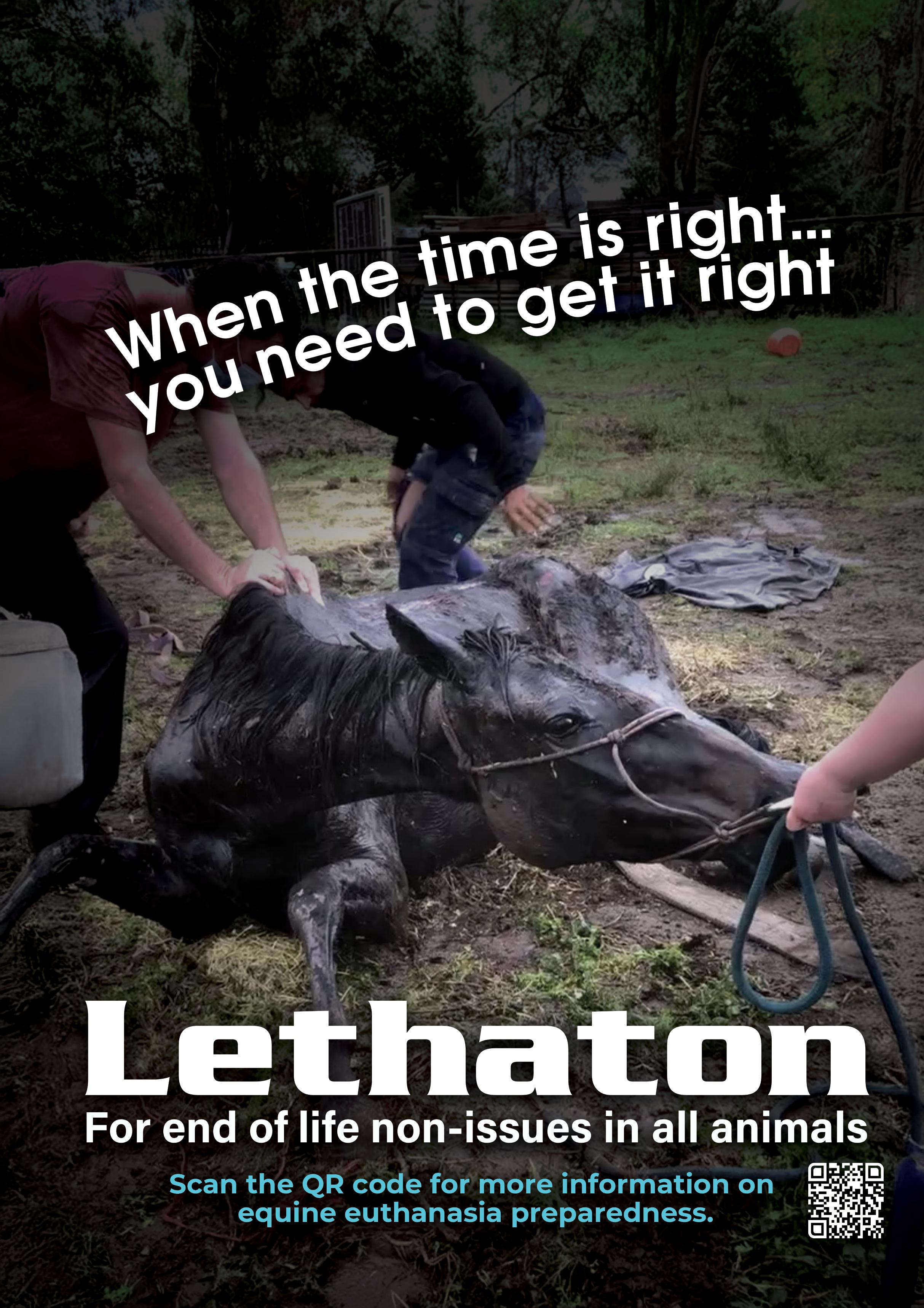
Pentobarbitone sodium 300 mg/mL
(equivalent to 273 mg/mL pentobarbitone)
480mL vial

Pentobarbital or pentobarbital combinations is the drug of choice for equine euthanasia by chemical means.
Lethaton Euthanasia Solution (Pentobarbitone sodium) is for the humane euthanasia of all animals. From the class of drugs known as barbiturates, it is used to induce euthanasia smoothly and quickly, with minimal discomfort to the animal.
“Euthanasia” is a Greek term meaning “good death”. This objective is met when death is induced which causes no pain or distress to the animal. To achieve this goal the techniques used should result in immediate loss of consciousness followed by cardiac and respiratory arrest ultimately resulting in loss of brain function and death. The drugs must act quickly and effectively. Veterinarians who perform this task must be technically proficient and well prepared.
When horses are euthanised, consideration should always be given to the unpredictability of how the horse is likely to fall and the possibility of some thrashing activity once recumbent. Some degree of exaggerated muscular activity is expected after the horse falls, even if the horse is not experiencing pain or distress. Appropriate precautions should always be taken to minimise any unnecessary risk to personnel and facilities. Bystanders should be warned that this is be expected and reassured that the horse is unconscious.
Lethaton should not be used for general anaesthesia.
250mL vial
Scan the QR code for more information on equine euthanasia preparedness.
Wherever possible, horses should be euthanised in a quiet, secluded and secure place. If this is not possible, or if the horse is already distressed (eg following severe injury or trauma) then it is recommended that the horse be administered an effective dose of a tranquilliser (eg Sedator or Xylazine 100) prior to Lethaton.
A neuromuscular blocking agent such as suxamethonium chloride (succinylcholine) may be added at 0.1 mg/kg to facilitate paralysis and rapid collapse to the ground.
Minimise the number of people involved in the procedure. An experienced horse handler on the horse’s head is preferred.
The horse’s halter should be fitted tightly so that it will not slip over the horse’s head if the horse falls backwards.
To minimise the chances of perivascular administration and to facilitate rapid administration, it is preferable to use a long, large bore catheter (eg 10-14G, 3½-5¼" catheter).
Pull up the required dose of Lethaton in 50mL syringes. It may be useful to have at least one spare syringe prepared.
Administer the full dose of the Lethaton rapidly via the catheter and then move a safe distance away from the horse.
The horse handler should maintain constant pressure on the lead rope so as to try and direct the horse’s fall and prevent the horse flipping over backwards.
Once the horse is recumbent, check for the absence of a pulse and heart beat, pupillary dilatation and loss of a palpebral and corneal reflexes.
Horses: 1-2mL/5kg (100-200mL @ 500kg BW) by rapid intravenous injection.
APVMA No. 88008
WARNING: Carcasses from barbiturate euthanasias remain a hazard for wildlife and pets that may consume them and to aquatic wildlife if the carcass is disposed of near a waterway. Be mindful of how carcasses containing barbiturates are disposed.
SEDATE HORSES PRIOR TO EUTHANASIA
I sedate all my euthanasias with detomidine (0.4-1.0mL) 5-10 min prior to injecting the barbiturate. Be careful not to over sedate horses, esp those that are cardiovascularly compromised, as this may prolong the euthanasia.

50mL vial
INDICATIONS
• Diuresis and saluresis
Used in racing horses (thoroughbred, standardbred, endurance) and sports horses (eg barrel racers) to prevent or reduce the severity and prevalence of Exercise Induced
Pulmonary Haemorrhage (EIPH).
Congestive cardiomyopathy / congestive heart failure (CHF)
Pulmonary and peripheral oedema
Distal limb oedema / cellulitis (“stocking up”)
Udder oedema
PHARMACOLOGY
Furosemide is a loop diuretic that acts by inhibiting the luminal Na-K-Cl cotransporter in the thick ascending limb of the loop of Henle. This results in decreased resorption of both sodium and chloride and increases the excretion of potassium and water.
Administration of furosemide leads to a decrease in blood volume and limits the rise in right atrial, pulmonary arterial and transmural pressure across the pulmonary capillaries during strenuous exercise. This makes the pulmonary capillaries less likely to rupture resulting in a a reduction in lung haemorrhage (EIPH).
In horses, furosemide also has some mild bronchodilator effects. The diuretic effect of furosemide takes place 5 minutes after administration, with peak effects occurring at approximately 30 minutes.
Serum half-life is approx. 2 hours but prolonged in patients with renal failure, uraemia, CHF and in neonates. Furosemide is detectable in urine 36–72 hours following injection.
PRECAUTIONS
Furosemide should be used with caution in patients with pre-existing electrolyte or water abnormalities (incl dehydration), most types of kidney failure, impaired hepatic function, and diabetes mellitus.
With prolonged use furosemide may cause hyponatraemia, hypocalcaemia, hypochloraemia and hypomagnesia. Diuresis persists in response to furosemide, even if the animal is dehydrated. This is less likely in animals with a normal food and water intake.
Furosemide should be used with caution when combined with corticosteroids (as this increases the risk of electrolyte imbalance), aminoglycoside antibiotics (increases risk of kidney or ear damage), and trimethoprim:sulphur (causes decreased platelet count).
Furosemide should be used with caution during pregnancy or in a lactating mare, as it has been shown to be passed through the placenta and milk in some species. It should be used with caution in horses with pituitary pars intermedia dysfunction (Equine Cushing's Disease). Furosemide may increase the risk of digoxin toxicity due to hypokalemia.
DOSAGE
0.5-1mg/kg twice daily (at least 8 hours apart) by either intravenous or intramuscular injection.
EIPH: 200-250mg by IV or IM injection 2-4 hours prior to galloping or racing in jurisdictions where raceday furosemide is approved. Remove access to water immediately after administration.
Congestive heart failure.: 0.5-2mg/kg IV or IM q6-12h to control oedema.
Acute renal failure: 2-4 mg/ kg
Foals may be treated with a continuous rate infusion of 0.1mg/kg/h with monitoring for urine production.
APVMA No. 94504
OPTIMISE X FOR EIPH
Aswell as Frusemide, I use Optimise X for treatment and prevention of EIPH.



INJECTABLE GnRH ANALOGUE FOR THE RELIABLE INDUCTION OF OVULATION
Deslorelin as acetate 1.25mg/mL (~10 doses)
APVMA Approval No. 89636 (Australia)

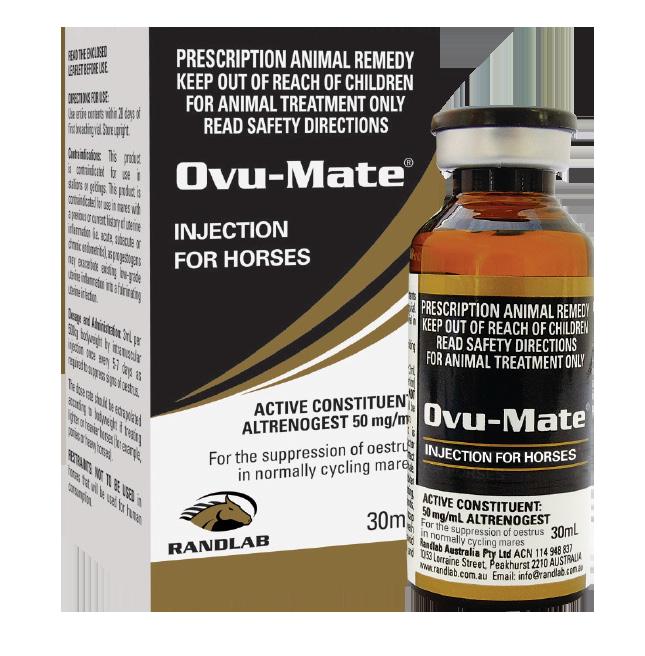
WEEKLY ALTRENOGEST INJECTION
Altrenogest 50 mg/mL (~10 doses)
APVMA Approval No. 83216 | ACVM No. A11475 (NZ)


Sizes: 1L & 2L
ORAL PROGESTAGEN FOR THE REGULATION OF OESTRUS AND MAINTENANCE OF PREGNANCY
Altrenogest 2.2 mg/mL
APVMA Approval No. 65653 | ACVM No. A10159 (NZ)

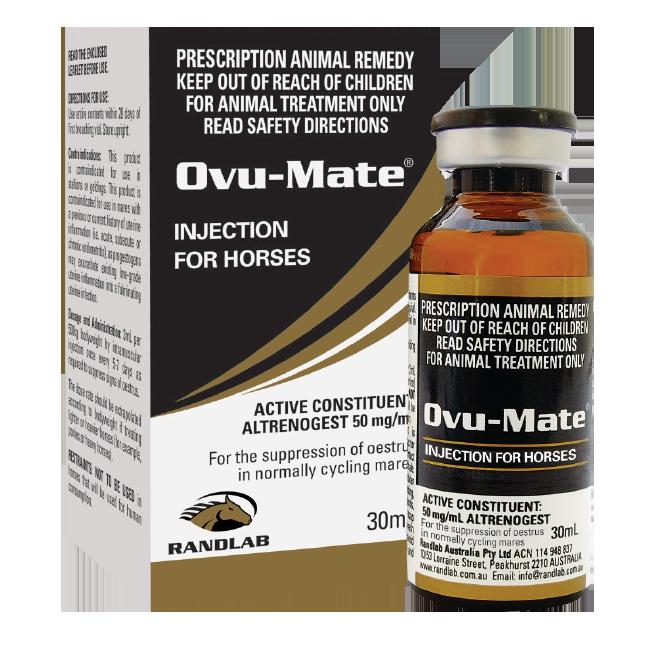
30mL multi-dose vial
Altrenogest acts similarly to the natural hormone progesterone by suppressing the normal oestrous cycle and preventing signs of oestrus and ovulation. Mares return to heat and release natural hormones again once treatment stops. Treatment with altrenogest reliably allows the regulation of the oestrus cycle of breeding mares or the behaviour of competition/leisure mares., improving both efficacy and safety.
Ovu-Mate injection may be used in fillies and mares to: Delay the onset of oestrus
• Suppress oestrous behaviour, improving safety in competition mares
• Synchronisation of oestrus for the efficient use of stallions or assisted-breeding techniques. As an adjunct to the treatment of placentitis.
• Altrenogest injection has also been used for the maintenance of pregnancy in "at risk" mares.
DOSAGE
Suppression of oestrus: 3mL per 500kg bodyweight (0.3mg/kg) by intramuscular injection once every 5-7 days or as required to suppress signs of oestrus.
The dose rate should be extrapolated according to bodyweight if treating lighter or heavier horses. APVMA No. 83216 | ACVM No. A011475 (NZ)
WARNING: If used in performance animals, the regulations of the relevant authorities regarding medication should be observed. In some jurisdictions (eg Racing Australia, NZTR, FEI, EA) and under some circumstances this product may be regarded as a prohibited or banned substance due to the presence of low levels of the male anabolic steroids trenbolone and trendione in all formulations of altrenogest. These levels are relatively higher with the injectable formulation, as the IM weekly dose rate is initially nearly 7-fold that of the daily oral dose. Altrenogest is banned in male competition/racing horses at all times.
Contact Randlab's Veterinary & Technical Director, Dr Michael Robinson on +61 451481050 or michael.robinson@randlab.com.au for further information.
As with any long-acting depot injections, some minor reactions may occasionally occur at the injection site, especially in mares on weekly dosing.
Alternating injection sites from week to week will assist in minimising these reactions. The gluteal muscles may also be used as an alternative to the neck.
A system such as injections on the left on even calendar days and on the right on odd calendar days will help to average out the number of injections at each site. This is a particularly useful system if a majority of injections are going to be administered by stud staff or different personnel.
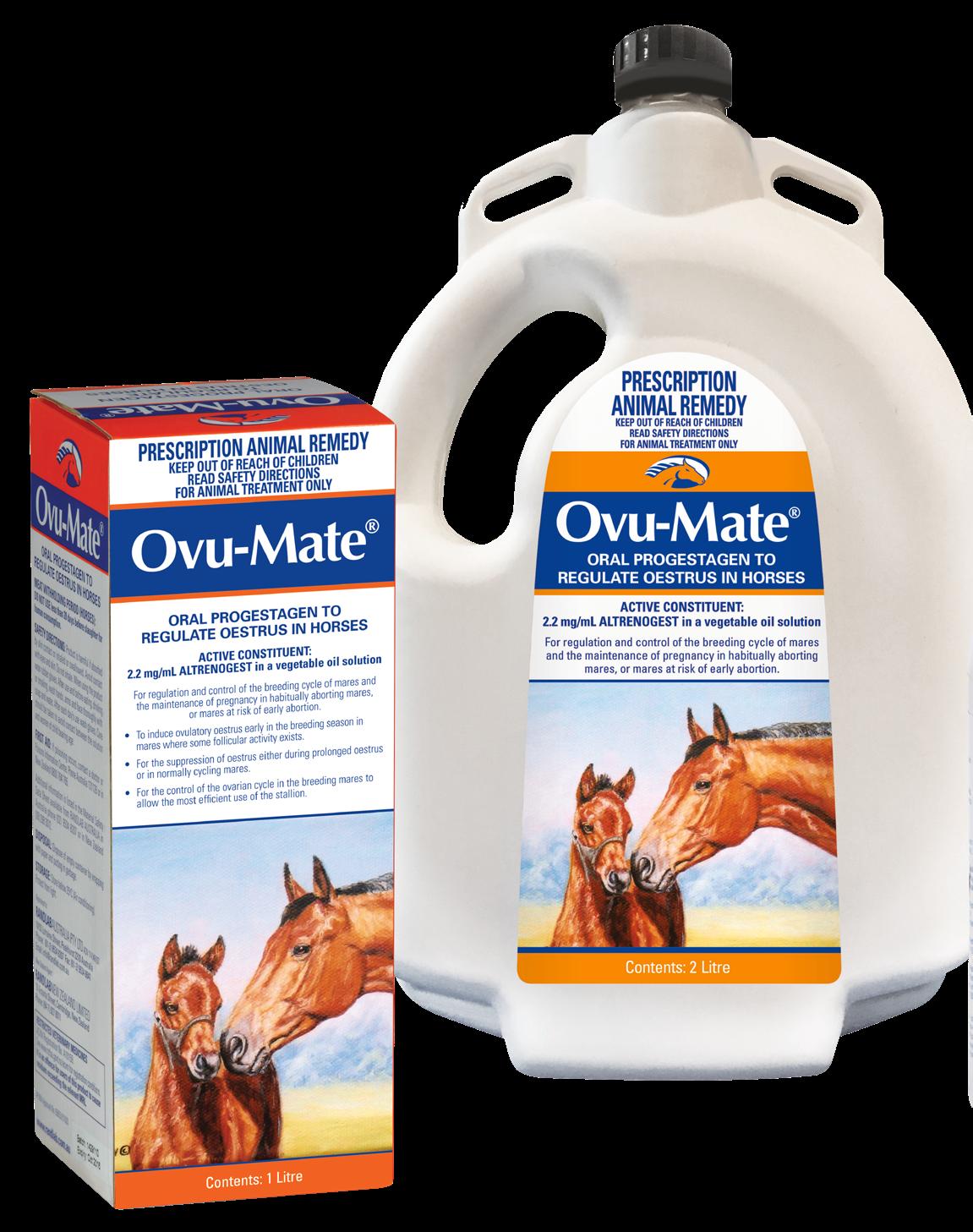
1L bottle
For regulation and control of the breeding cycle of mares and the maintenance of pregnancy in habitually aborting mares or mares at risk of early abortion.
• To induce ovulatory oestrus early in the breeding season in mares where some follicular activity exists.
• For the suppression of oestrus either during prolonged oestrus or in normally cycling mares.
2L bottle

available for the 2L Ovu-Mate through Randlab or your preferred Wholesaler.
• For the control of the ovarian cycle in breeding mares to allow the most efficient use of the stallion or assisted-breeding techniques.
• For suppression of oestrous behaviour in fillies and mares engaged in competition and racing.
• For the maintenance of pregnancy in habitually aborting mares or mares at risk of early embryonic death or abortion.
• For behavioural modification in non-competition stallions and geldings.
WARNING: If used in performance animals, the regulations of the relevant authorities regarding medication should be observed. In some jurisdictions (eg Racing Australia, NZTR, FEI, EA) and under some circumstances this product may be regarded as a prohibited or banned substance due to the presence of low levels of the male anabolic steroids trenbolone and trendione in all formulations of altrenogest. Levels are lower in oral formulations of altrenogest compared to the long-acting injectable formulations. Altrenogest is banned in male competition/racing horses at all times.
Contact Randlab's Veterinary & Technical Director, Dr Michael Robinson on +61 451481050 or michael.robinson@randlab.com.au for further information.
DOSAGE
Dosage for oral administration. Administer 1mL
Ovu-Mate per 50 kg bodyweight (equivalent to 0.044 mg Altrenogest per kg) daily (12.5 mL per 625 kg mare). Ovu-Mate may be administered in the feed or orally over the back of the tongue by syringe. Protective gloves should be worn when handling this product.
APVMA No. 65653 | ACVM No. A010159 (NZ)
NOTE TO SELF


INDICATIONS
For the induction and timing of ovulation in mares supporting a follicle greater than 30mm in diameter and signs of oestrous behaviour and/or uterine and cervical oestral changes (oedema) on ultrasound.
Upwards of 94% of suitable mares would be expected to ovulate within 48 hours of Biorelin administration, with an additional percentage (< 6%) up to 54 hours. Few mares will ovulate in the first 24 hours and most will ovulate around 40 hours post-injection.
Mares should be bred ~ 24 hours post Biorelin injection for chilled or fresh semen.
Mares should be bred ~ 40 hours post Biorelin injection for frozen semen.
During the transitional oestrus period, a higher dose of Biorelin (1.9mg = 1.5mL) may improve ovulation rate.

10mL multi-dose vial (10 doses)
DOSAGE
Shake vial vigorously before administration. Inadequate re-suspension may affect efficacy. Do not store in plastic syringes.
For administration by intramuscular injection only. Discard unused portion within 28 days of broaching.
1.0 ml by intramuscular (IM) injection (1.25 mg deslorelin per dose).
Only 1 mL should be administered per mare during any one oestrus cycle.
APVMA No. 89636
Used properly, a twitch is a great restraint tool for minor veterinary procedures in the horse. In most horses (but not all) it stimulates nerve endings in the horse’s nose and the release of endorphins from the horse’s pituitary. The endorphins promote a state of semisedation, calmness and mild analgesia.
Here’s how to apply a twitch safely and effectively.
1. Give the horse a reassuring pat or scratch to get started.
2. Hold the loop of the twitch in your left hand.
3. Place the loop behind your thumb, in front of your index finger and behind your middle/ring/little fingers.
4. Stand on the left side of the horse.
5. Use your thumb and middle/ring/little fingers to grab the horse’s nose.
6. Then point your elbow vertically up towards the sky.
7. The twitch should then naturally slide off your wrist and onto the horse’s nose.
8. Twist it quickly with your right hand, slowing down as it begins to tighten.
9. Once tight, secure the twitch handle with the lead rope using two half hitches.
10. Hand the twitch back to horse handler and advise them to stand against and in contact with the horse’s shoulder. This assures that both you and the handler are not in the direct line of fire of any striking.
11. To maximise the effect of the twitch apply gentle downward pressure on the handle. Works better than tightening it.
Horses with twitches on can act unexpectedly (strike, explode). Only apply the twitch when you are ready to go and remove the twitch as soon as possible after the procedure has been completed.
BEWARE horses that fight the twitch. If they don't "zone out", the twitch is not working and they will tend to fight it. Take it off. Equally, I am always concerned about the horse that is totally zoned out. They tend to wake up unexpectedly with the slightest provocation and explode. Take the twitch off these horses or try and keep them "engaged" in what's going on.
RANDLAB supports the responsible use of anthelmintics.


Moxidectin 20 mg/mL, Praziquantel 125 mg/mL
TOEQUIVALENT PLUSEQUEST® TAPE

11.8g syringe (up to 575kg BW)
Check out the Australian Guidelines for Equine Internal Parasite Management. (2025).
Although the guidelines are targeted for Australian veterinarians, most of the information is applicable globally. Free to download.
Supporting the veterinary community. Randlab's dewormers are supplied exclusively to veterinarians. New Product
Potent, long-acting dewormer effective against encysted larvae
Whenever possible the decision to deworm should be based on the results of a Faecal Egg Count (FEC).
INDICATIONS
Pradectin with Tape Gel Wormer is effective for the treatment and control of small strongyles (adults and larvae including encysted stages), large strongyles, tapeworm, pinworms, ascarids, Habronema spp, stomach bots, hairworm, intestinal threadworm and cutaneous onchocerciasis.
Pradectin with Tape Gel Wormer has a prolonged Egg Reappearance Period (ERP) of at least 14 weeks, which means that recontamination of the pasture by strongyle eggs is significantly reduced during this period.
Moxidectin is also an effective arachnicide against feeding ticks.
WARNING: To minimise emerging anthelminthic resistance to moxidectin, it is strongly recommended that moxidectin-containing wormers (such as Pradectin with Tape) not be used for routine deworming of horses.
Moxidectin should be reserved for cases where known or suspected resistance to other macrocyclic lactones (such as ivermectin, abamectin) has been established or where there is a strong likelihood of encysted and dormant larvae. Moxidectin’s use as a routine dewormer should be discouraged.
Pradectin with Tape Gel Wormer is the anthelminthic of choice for horses (especially young horses) where heavy strongyle burdens (especially encysted cyathostomin larvae) are suspected.
The mass simultaneous emergence from the large intestinal wall of encysted larvae (eg following worming with an anthelminthic that is not effective against encysted larvae) may result in a syndrome known as larval cyathostominosis.
This syndrome is characterised by an acute generalised typhlocolitis and a profound inflammatory reaction resulting in profuse, watery diarrhoea and illthrift which may occasionally progress to death.
Premium product for use when macrocyclic lactone resistance is identified
RANDLAB supports the responsible use of anthelmintics.
DOSAGE
Pradectin with Tape Gel Wormer is administered orally at a dose rate of 0.4 mg/kg moxidectin and 2.5 mg/kg praziquantel.
To avoid over- or underdosing, use the correct dose based on the horse’s measured/estimated body weight.
Pradectin is supplied in a ready to use syringe, calibrated according to the body weight of the horse to be treated in 25 kg body weight increments. Use of this calibration will deliver the correct recommended dose.
One syringe is sufficient to treat a horse weighing 575 kg. For a heavy horse (weight exceeding 575 kg) it will be necessary to apply more than one syringe. For example, a 725 kg horse would require 1¼ syringes for treatment.
If gel remains in the syringe once the full dose has been delivered, replace the barrel cap; store the remaining gel below 30°C (room temperature) for later use.
APVMA No. 89307

Check out the Australian Guidelines for Equine Internal Parasite Management. (2025).
Although the guidelines are targeted for Australian veterinarians, most of the information is applicable globally. Free to download.
RANDLAB
Supporting the veterinary community. Randlab's dewormers are supplied exclusively to veterinarians.
INDICATIONS
For rotation out of the macrocyclic lactone ("-mectin") group.
Whenever possible the decision to deworm should be based on the results of a Faecal Egg Count (FEC).
For the treatment and control of susceptible strains of all common worms of horses including tapeworms and adult stages of ivermectin, moxidectin and abamectin resistant strains of Parascaris equorum.
At the recommended dose rate, Oxfendoate is effective against the following parasites:
• Small Strongyles including benzimidalzole resistant (adults and immature): Cyathostomum spp., Cylicocyclus spp., Cylicostephanus spp., Cylicodontophorus spp., Gyalocephalus spp. etc
• Large Strongyles: Strongylus vulgaris (adults and arterial larval stages), Strongylus edentatus (adults and tissue stages), Strongylus equinus (adults) and Tridontophorus spp. (adults).
• Ascarids: Parascaris equorum (adult and immature)
• Habronema muscae (adult)
• Onchocerca spp. (microfilariae)
• Hairworms: Trichostrongylus axei (adult)
• Intestinal Threadworms: Strongyloides westeri (adult)
• Lungworms: Dictyocaulus arnfieldi (adult and immature)
• Pinworms: Oxyuris equi (adult and immature)
• Tapeworms: Anoplocephala perfoliata, Anoplocephala magna, Paranoplocephala mamillana (adult, immature, heads, segments).

35mL syringe (up to 700kg BW)
RANDLAB supports the responsible use of anthelmintics.
DOSAGE
Oxfendoate Oral Broad Spectrum Worm Paste for Horses is given at the recommended dose level of 1 mL per 20 kg bodyweight.
The dose of 1 mL per 20 kg bodyweight delivers 10 mg/kg of Oxfendazole and 13 mg/kg of Pyrantel Embonate.
The contents of this syringe will treat one horse at 700 kg bodyweight.
Each weight marking on the syringe plunger will deliver 5 mL of paste, which is sufficient to treat 100 kg bodyweight.
Depress the plunger to the chosen dose, depositing the dose on the base of the tongue.
APVMA No. 93028
BECOME A BETTER LISTENER & BUYER
Dr CHARLES SPICER-JENKINS (Centennial Park Veterinary Practice and VetTrade)
Become a motivated and more active listener to better understand what your clients really want. And of course, get all your practice equipment needs from VetTrade.com.au. They do all the hard work for you getting multiple (minimum of 3) quotes from reputable local suppliers. There is no additional cost to the purchaser. This is an established practice in the human medical field but a relatively new concept for veterinarians.
Abamectin 3.7 mg/g, Praziquantel 46.2 mg/g
TRADITIONAL BROADSPECTRUM DEWORMER

32.4g syringe (up to 600kg BW)
INDICATIONS
Check out the Australian Guidelines for Equine Internal Parasite Management. (2025). Although the guidelines are targeted for Australian veterinarians, most of the information is applicable globally. Free to download.
RANDLAB
Supporting the veterinary community. Randlab's dewormers are supplied exclusively to veterinarians.
Whenever possible the decision to deworm should be based on the results of a Faecal Egg Count (FEC).
At the recommended dose rate, Promax All Wormer for Horses is effective in the treatment and control of the following parasites: tapeworms, roundworms (including arterial larval stages of Strongylus vulgaris and benzimidazole resistant small strongyles) and bots.
ProMax All Wormer also effectively controls skin lesions caused by Habronema and Draschia spp. cutaneous larvae (summer sores), and Onchocerca spp. microfilariae (cutaneous onchocerciasis).
ProMax All Wormer is safe to use in foals, pregnant mares and breeding stallions.
RANDLAB supports the responsible use of anthelmintics.
DOSAGE
Dose orally at the recommended rate of 0.2 mg/kg abamectin and 2.5 mg/kg praziquantel. Each weight marking on the syringe plunger will deliver sufficient paste to treat 50 kg bodyweight. The contents of the syringe will treat a total of 600 kg bodyweight.
APVMA No. 87987

Just mentioning for a friend, of course.
When a horse suffers a true nasal bleed after stomach tubing it can be a bloody mess. The blood never seems to end and you and everyone else usually end up looking like you are in a Jackson Pollardesque massacre. Don't panic. It will stop after what seems like an eternity. But then it can take forever to clean up in the aftermath. I like to remove the horse to a hosing dock and
Ivermectin 18.7 mg/g, Praziquantel 140 mg/g

Check out the Australian Guidelines for Equine Internal Parasite Management. (2025). Although the guidelines are targeted for Australian veterinarians, most of the information is applicable globally. Free to download.
RANDLAB Supporting the veterinary community. Randlab's dewormers are supplied exclusively to veterinarians.
INDICATIONS
LOW VOLUME, BROADSPECTRUM DEWORMER
7.49g syringe (up to 700kg BW)
Whenever possible the decision to deworm should be based on the results of a Faecal Egg Count (FEC).
Goldmectin LV Ivermectin Oral Paste is highly effective in the treatment and control of most types of equine helminths including tapeworms, gastrointestinal, cutaneous and pulmonary nematodes and bots in horses of any age.
Susceptible parasites include: tapeworms, roundworms (including arterial larval stages of Strongylus vulgaris and benzimidazole resistant small strongyles), bots, and skin lesions caused by Habronema and Draschia spp. (summer sores) and Onchocerca spp. microfilariae (cutaneous onchocerciasis).
Ivermectin may also be used as an arachnicide to remove feeding ticks.

RANDLAB supports the responsible use of anthelmintics.
DOSAGE
Goldmectin LV is given orally at the recommended dose level of 1ml/100 kg bodyweight. The dose of 1ml/100 kg bodyweight delivers 0.2 mg/kg of ivermectin and 1.5 mg/ kg of praziquantel. The contents of this syringe will treat one horse at 700 kg bodyweight. Each weight marking on the syringe plunger will deliver 1.07 g of paste which is sufficient to treat 100 kg bodyweight.
APVMA No. 88042
The KardiaMobile device is small (weighs 18g), robust and easy to use. It connects to both iOS and Android phones allowing a modified lead II ECG in just a few steps. Traces are stored on your phone and can be easily downloaded to be sent to a cardiologist or attached to the horse’s medical record.
The basic model is only $125. I bought mine from Alivecor on eBay. 6 and 12 lead ECG models are also available. And they were an Australian invention!
An essential tool for any sports med or racetrack veterinarian, medicine specialists, equine cardiologist, neonatal or critical care intensivist or equine veterinarian wishing to monitor their own cardiac function.


INDICATIONS
Butaphosphan is an organic phosphorus supplement. It is commonly administered in conjunction with cyanocobalamin (Vitamin B12) to treat or prevent deficiencies in various species, including horses, cattle, swine and poultry. This combination helps improve metabolism, immune function, and muscle performance. Butaphosphan is particularly useful for addressing phosphorus deficiencies caused by factors like anorexia, stress or overexertion.
Phosphate/B12 supplementation has been shown to:
• Promote muscle energy production during strenuous exercise.
Stimulate fatigued smooth and cardiac muscle.
Improve muscular efficiency and endurance during training.
• Increase muscle efficiency.
• Support liver function.
• Increase plasma phosphorous levels, eg post viral infections.
• Assist in recovery from hard work, racing or stress. Stimulate and maintain appetite.
Aid skeletal development during growth.
Treat and prevent macrocytic anaemias.
Promote formation of red blood cells.
• B12 is involved in protein, fat and carbohydrate metabolism.

100mL vial
PHARMACOLOGY
Phosforte B Injection contains injectable organic phosphorus and B12.
Phosphorous is essential for cellular energy production. It is a major component of ATP, the energy source of muscles and of creatine phosphate, the major muscle storage form of highenergy phosphates in the cell.
Phosphorous also acts as a blood and urinary buffer to maintain body pH.
Phosphorous is also an important structural component of bones.
DOSAGE
Although Phosforte B is registered for IM or SC use, it is more frequently administered (off label) by intravenous injection. Volumes of more than 20mL should be split and given at several intramuscular sites or given subcutaneously (or intravenously).
In acutely diseased animals:
Horse: 5-25 mL. Typically a course of 3-5 injections would be given every second day.
Foal: 5-12 mL
APVMA No. 90164
Although Phosforte B Injection is registered for IM or SC use, its pioneer product is more commonly used off label by intravenous injection.
Dr Laura Hardefeldt (Melb Uni)
Strep zoo & Strep equi are always susceptible to penicillin. If you get a susceptibility test back from the lab that shows resistance to penicillin, you need to call the lab and ask them to rerun the sample.







Contains no prohibited substances
INDICATIONS

As Optimise X is a nutritional supplement, we make no specific claims about its use.
However, Optimise X has been shown in humans to:
• Optimise general health
• Aid recovery from strenuous
• Improve joint mobility and decrease joint pain
• Regulate insulin exercise/training/competition
• Reduce oxidative stress
• Cardiovascular protective
• Be of value in the prevention and treatment of
• Reduce muscle fatigue pathologies associated with oxidative stress,
• Improve muscle contractility cancer and aging.
• Improve endurance
In horses, Optimise-X may be beneficial in reducing oxidative stress and muscle fatigue caused by free radicals generated during exercise, promoting general health and allowing horses to perform at their optimum. Its cardiovascular affects may be of benefit in conditions of the respiratory system such as Exercise Induced Pulmonary Haemorrhage (EIPH / “bleeders”).
PHARMACOLOGY
Optimise X contains a unique blend of natural ingredients which are believed to function as adaptogens. An adaptogen is a natural substance, often derived from plants, that is considered to help the body adapt to stress, fatigue, and aging by acting upon vital tissues and organs and promoting or restoring normal physiological functioning.
Research in vitro and in the human literature would indicate the key ingredients in Optimise X have the following properties:
Pinus densiflora; antioxidant, antimicrobial, anti-inflammatory, insulin regulation, neuroprotective, antimutagenic.
Actinidia chinensis; antioxidant, anti-inflammatory, immunoregulatory, antimutagenic, antihyperlipidemic, insulin regulation and cardiovascular protective. Good source of triterpenoids, polyphenols, Vit C, amino acids and minerals.
Aloe vera; antioxidant, antibacterial, anti-inflammatory, insulin regulation, antimutagenic, antihyperlipidemic. Contains polyphenols which are powerful antioxidants.
Agave inulin; fibre source, pre-biotic, improves digestive health
Papain; anti-inflammatory EXERCISE PHYSIOLOGY
In a series of double-blinded, placebo-controlled human exercise physiology studies, Optimise X has been shown to:
• Increase time to fatigue of trained and untrained cyclists on a cycle ergometer.
Reduce oxidative stress induced suppression of aerobic respiration thereby increasing the efficacy of ATP production.
Blunt the decrease in force generating capacity that occurs during an acute
• bout of resistance free weight training, which improved the quality of work during the training session.
• Reduce blood lactate concentration during exercise at 70% of peak power output.
Reduce perceived exertion at 70% and 95% of peak power output.
ADMINISTRATION AND PRECAUTIONS
Shake bottle well before each use.
In some jurisdictions it is a requirement for supplements to be administered in the horse’s feed so that it may be voluntarily consumed. Administration by syringe over the back of the tongue withdraws the Regulator’s requirement for voluntary consumption and would require registration of this product as a medicine. Most horses find Optimise X palatable and will eat it readily in their feed.
DOSAGE
The recommended daily dose is 50mL once daily mixed in the horse’s feed.
At times of acute stress (eg heavy competition, following an episode of EIPH/”bleeding”, longdistance travel, “tie up”/rhabdomyolysis, etc), this dose may be increased two to fourfold.
We are interested to hear your feedback on this product. Please either email Dr Michael Robinson on mrobinson@randlab.com.au or ring on +61 (0)451 481 050.
WARNING: This product is believed to contain no prohibited substances, but veterinarians should check with any governing authority before prescribing in competition horses. Its human equivalent is WADA and HASTA approved.

INDICATIONS
Great value electrolyte, B-group vitamins and antioxidant supplement with a high concentration of ingredients. Suitable for use as a feed supplement or as a recovery drench.
DOSAGE
60% MORE ELECTROLYTES IN EVERY 30G DOSE THAN THELEADER!MARKET
One level scoop provides the daily dose for in feed supplementation of 30g. This should be given twice daily in times of heavy sweating. Recovery drench administer 150-200g (5-7 scoops) diluted in 1-2L of (warm) water by nasogastric tube.
Each 30g dose provides; Sodium 3.60g, Potassium 0.40g, Calcium 2.50g, Magnesium 0.40g, Chloride 3.40g, Phosphate 3.80g, Sulphate 1.30g, Bicarbonate 10.6g, Thiamine (B1) 0.11g, Riboflavin (B2) 0.11g, Niacin (B3) 0.32g, Pyridoxine (B6) 6.00mg, Vitamin B12 0.43mg, Choline 0.16g, Folic acid 24.48mg, Inositol 0.27g, Vitamin E 0.22g
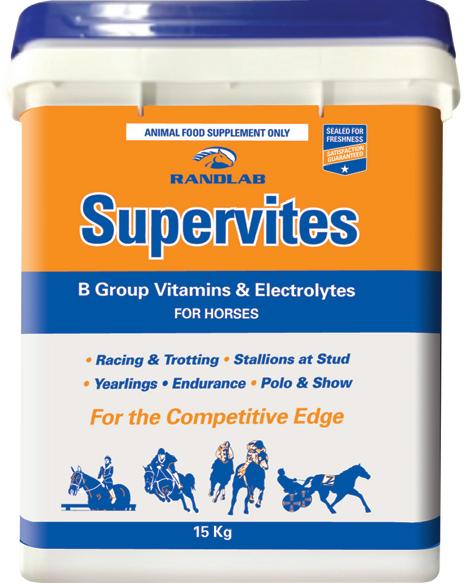
15kg pail
INDICATIONS
Oral Electrolyte paste with B-Group Vitamins, Vitamin E and Folic Acid. To aid recovery in hard working or dehydrated horses.

60g syringe 12 x 60g Pack syringes
Each g contains: Sodium 63.0mg, Chloride 208.8mg, Potassium 81.3mg, Magnesium 2.96mg, Calcium 21.2mg, Zinc 1.34mg, DL-tocopheryl acetate (Vitamin E) 18.22mg, Folic acid 0.35mg, Thiamine mononitrate (Vitamin B1) 1.70mg, Riboflavin (Vitamin B2) 1.44mg, Nicotinamide (Vitamin B3) 5.55mg, Calcium pantothenate (Vitamin B5) 3.00mg, Pyridoxine hydrochloride (Vitamin B6) 0.17mg, Cyanocobalamin (Vitamin B12) 0.68mg

INDICATIONS
Electrolytes, B vitamins and energy recovery drench for horses.
300g powder sachet
Each 300g sachet provides Vitamin B complex, balanced electrolytes; sodium, potassium, magnesium, calcium, chloride, sulphates, volatile fatty acids (propionate, acetate), buffering agent (citrate) and an anti-oxidant (Vitamin E), all in a rapid and completely water soluble form.

INDICATIONS
60mL adjustable dose syringe
Highest concentration of branched chain amino acids for optimum muscle recovery and treatment and prevention of "tie up”.
Each 60mL syringe contains: L-Leucine 22.00g, L-Isoleucine 5.50g, L-Valine 5.50g, L-Glutamine 0.68g, L-Carnitine 0.43g, Aniseed oil 25g/L
INDICATIONS
Omeprazole paste for treatment and prevention of gastric ulcers. Convenient single dose syringe. 25% better absorption than competitors in 4 x University trials means better bioavailability.
Omeprazole 370 mg/g, pH-Buffered Paste

10 x 6mL single dose syringe
Available in Australia via Wholesalers. This product is available in NZ through Randlab.

Each 30g scoop contains:
INDICATIONS
Premium product for maintenance of healthy hooves, hair and skin.
1.5kg or 6kg tub

INDICATIONS

30mL multidose syringe
12 x 3mL single dose vials
Injectable corticosteroid (flumethasone) for intramuscular or intraarticular use.
For the treatment of acute musculoskeletal conditions in horses, dogs and cats.
Biotin 30mg, Zinc 250mg, Methionine 500mg, Arginine 100mg, Lysine 100mg, MSM 2000mg, Lecithin 200mg, Folic Acid 50mg, Magnesium 150mg, Copper 75mg, Vit E 500iu, Vit C 1000mg, Calcium 4200mg, Phosphorous 3860mg L-Methionine 40mg/mL, Inositol 50mg/mL, Carnitine 50mg/mL, Arginine 50mg/mL Flumethasone 0.5 mg/mL

INDICATIONS
100mL multi dose vial
Lipotrope injection for horses and camels with liver disease. Amino acid blend to help restore liver function.
INDICATIONS
Anti-inflammatory, analgesic and antipyretic oral paste for pain relief from musculoskeletal conditions.
Aids in the treatment of musculo-skeletal conditions.
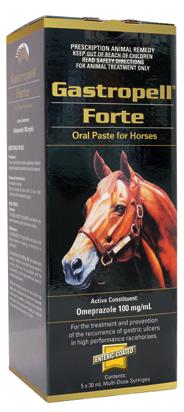







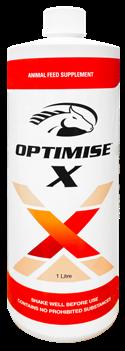


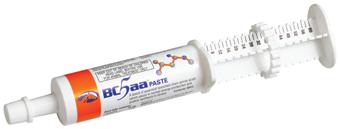








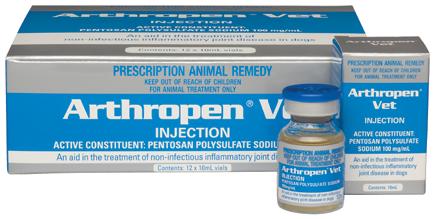











Our commitment to quality starts at sourcing only the finest raw materials and pharmaceutical grade ingredients for all our products. We manufacture our products in facilities that are GMP approved through the Australian regulator, the APVMA. We carefully follow each batch of our manufactured products with strict Quality Assurance (QA) testing in government-approved independent laboratories.



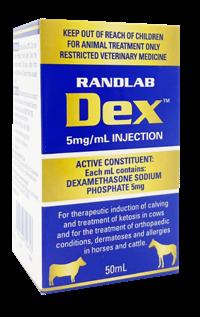










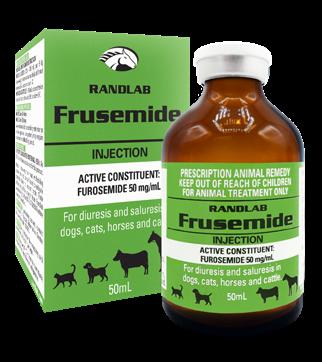





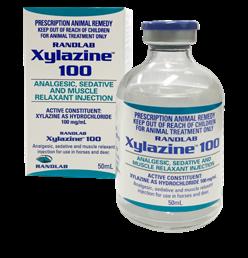






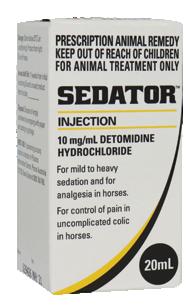

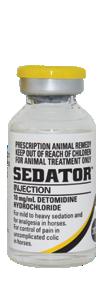



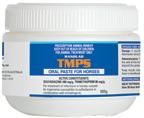






Randlab HQ
Phone: (+61-2) 9728 3505
Email: info@randlab.com 71 Milperra Rd, Revesby, NSW 2212

Dr Ali Rana - UAE
Phone: +971 56 440 1103
Email: ali.rafique@randlab.com


Andrew Grant - QLD/NT
Phone: 0426 407 117
Email: andrew.grant@randlab.com.au

Rebecca Puvanendran - WA
Phone: 0420 349 301
Email: rebecca.puvanendran@randlab.com.au



Alex Macpherson - VIC/TAS/SA
Phone: 0421 829 101
Email: alex.macpherson@randlab.com.au

Dr Michael Robinson
Global Technical Director/Veterinarian
Phone: + 61 (0) 451 481 050
Email: michael.robinson@randlab.com.au
Dr Mohammed Elnashar - GCC
Phone: +971 56 988 1882
Email: mohamad.elnashar@randlab.com
Natalie Hannaford - NSW/ACT
Phone: 0439 614 279
Email: natalie.hannaford@randlab.com.au
John Dalton - NSW/ACT
Phone: 0404 221 776
Email: john.dalton@randlab.com.au

Dr Tim Montgomery - NZ
Phone: (+64-9) 275 5657
Email: drtim.montgomery@randlab.co.nz
Randlab has a global distribution network of partners committed to serving veterinarians and their clients wherever in the world they may be.

Randlab Australia/HQ
Phone: (+61-2) 9728 3505
Email: info@randlab.com
71 Milperra Rd, Revesby, NSW 2212, Australia

China 兰德实验室中国


Mobile: (+86) 1801 975 3936
Email: sophia@randlab.com.cn
中国经销商
Beijing Yi Long Xiang Technology Ltd
逸龙翔(北京)科技有限公司
Phone: (+86) 10 6949 2331
Email: 13911609124@126.com
Hong Kong
Kruuse Hong Kong Limited
Phone: +852 3116 3326
Email: kinson.lok@covetrus.com
Miracle Pharma Ltd
Phone: 2396 9919
Email: sales@miraclepharmahk.com ��: www.miraclepharmahk.com
Japan



EBM Trading Japan
Phone: +81 (0) 80 4364 4002
Email: h.echigo@ebmtrading.com
��: www.ebmtrading.com
Mongolia
Horse Power LLC
Phone: (+976) 998 812 05 or (+976) 981 112 05
Email: Horsepowersyd@gmail.com




Randlab New Zealand
Phone: +64 27 6263802
Email: drtim.montgomery@randlab. co.nz
3/180 Montgomerie Road, Mangere, Auckland, New Zealand
Singapore
Mano Equestrian Services pte ltd
Phone: (+65) 6363 4236
Email: cmano@manoequestrian.com.sg ��: www.manoequestrianservices.com
Thailand
Double T Plus Co Ltd
Phone: +6627361133
Netherlands Equiprovet BV
Phone: +31 (0)74 259 15 47
Email: info@equiprovet.com ��: www.equiprovet.com
UK
Merlin Vet UK
Phone: (+44) 1896 849 641
Email: info@merlinvet.co.uk ��: www.merlinvetuk.co.uk
Nupsala Veterinary Services
Phone: (+44) 1865 922 227
Email: info@nupsala.com ��: www.nupsala.com
Raman Pharma
Phone: (+44) 1252 260 460
Email: sales@ramanpharma.com ��: www.ramanpharma.com
Michele Peiris-Export Business Manager
Phone: +61 417 041 811
Email: michele.peiris@randlab.com.au
Please contact Michele Peiris for all other countries not listed above.
We hope you like this catalogue �� and find it a useful resource to refer to throughout the year �� But if you decide to discard it ��, please recycle it.


Randlab Middle East / Gulf
Phone: (+971) 426 666 48
Email: Talath.Qureshi@randlab.com.
Warehouse 5, Al Qusais Industrial Estate, Area 3, Dubai, United Arab Emirates




Bahrain
The Arabian Horse F.E.& V.S
Phone: +973 1759 4549
Email: horse@batelco.com.bh
Kuwait
International Company for Agriculture Trades &IHCC (Horse Clinic) Phone: +968 2470 5505
Email: pharmacy@ihcckuwait.com ��: www.ihcckuwait.com
Oman
Amvet
Phone: +968 2470 5505
Email: info@amvetpharm.com ��: www.amvet.om
Qatar
Al-Dousari Veterinary Services & Agriculture Co. Phone: +974 4481 2281
Email: aldousarivet@yahoo.com ��: www.aldousarivet.com
Dr Michael Robinson
Global Technical Director/Veterinarian
Phone: + 61 (0) 451 481 050
Email: michael.robinson@randlab.com.au


